Make Sirene cheese, a feta-like cheese at home. No press required! A Bulgarian white cheese, salt brined and aged for fantastic flavor.
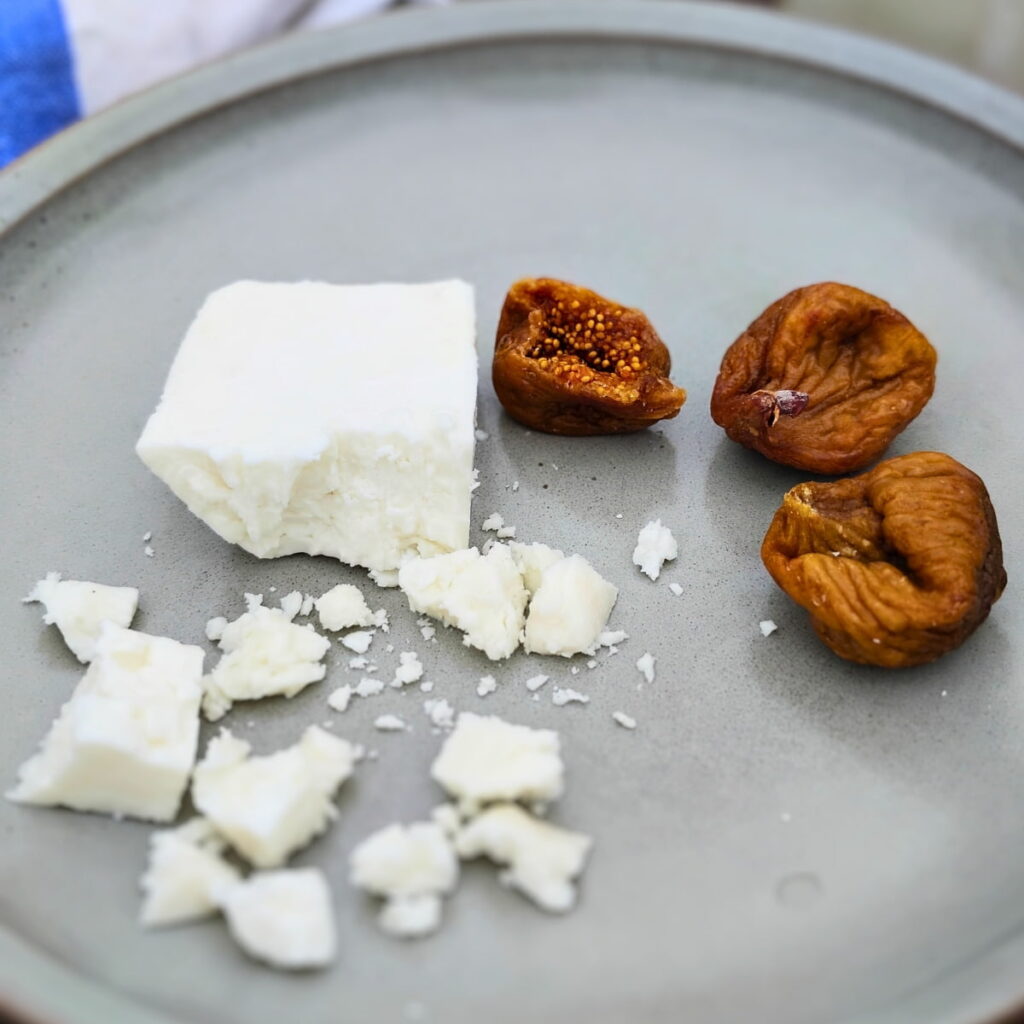
This post contains affiliate links. As an Amazon affiliate, I make a small commission at no extra cost to you if you make a qualifying purchase. See my full disclosure here.
Do you love feta cheese? It is so versatile and has that awesome tangy, salty flavor. This recipe will yield a Bulgarian style brined cheese, that is similar to Greek feta. In Bulgaria it is called brine-aged white cheese or Sirene (which simply means ‘cheese’).
Sirene is easy to make without a cheese press and it results in a delicious, flavorful cheese that can be made with any dairy milk. The cheese gets aged in a salted brine and can be ready to enjoy in about a month.
Read on to learn how to make a fabulous brined Sirene Cheese.
If you love making cheese, learn how to make your own starter cultures. And for all you goat milk lovers, I’ve got a great recipe to make Chevre Cheese from scratch. Discover Clabber Cheese, the original cheese, and my favorite, German Quark Cheese to make outrageously delicious and healthy desserts.
Sirene Cheese From Scratch

When my goats start producing milk in the spring after kidding, I’m always eager to replenish my cheese cave and make fresh soft and hard cheeses. I start with the easy, soft, fresh bag cheeses such as chevre, quark or clabber cheese, and then move on to the more involved cheeses such as Bel Paese, Feta cheese, Mozzarella and Cheddar cheeses. I’ll be posting more of these, so come back for those later!
This soft feta cheese is kind of a small step up from chevre, quark, or other bag cheeses, but nothing complicated. So it’s a great beginner cheese to make.
What is Sirene Cheese?

Sirene cheese is similar to feta cheese, but it is not feta. Technically the term ‘Feta’ can only be used for cheese that is made in a specific region of Greece with sheep’s milk and up to 30% goat’s milk. This is similar to Champagne and Camebert, which are region specific. But in America, this protection of location is not generally observed, and for this reason, Sirene is often referred to as ‘Bulgarian feta’.
Feta cheese is one form of the many brine-aged white cheeses that are made in various countries, often by slightly different methods. Cheese cannot be standardized or pressed into one mold. Even when using commercial cultures, we have to consider so many influences that can steer the cheese besides the culture, and each can affect the final makeup of a cheese. It’s a beautiful thing, because your cheese will be unique!
Brine aged cheeses were developed in countries that are hot and dry. By ripening cheese in a brine, the people could preserve it without the need for a moist cheese cave.
The brine that is made≥ in these countries is salty enough, that the cheese can ripen at room temperature, however, with the availability of refrigeration, we can make a less salty brine that is still salty enough to keep bacteria from growing and ruining the cheese and it will allow the cheese to ripen without the worry of mold growing.
Bulgarian Sirene vs. Greek Feta Cheese
While traditional Greek feta is a brine-aged white cheese made from goat’s and sheep’s milk, which is what gives it its character and name, we can make a feta-like cheese from any milk.
The traditional feta cheese, made with sheep’s and goat’s milk, yields a strong flavored, tangy cheese. Cow’s milk produces a milder cheese that is a cream color rather than white. It is not as intensely flavored, but it is still delicious! And you do have the option of adding lipase enzyme to intensify the flavor of cow’s milk cheese. Bulgarian sirene can be made with any dairy milk.
Greek feta cheese is probably more familiar. It is firm, and makes dry crumbles on your Greek salad. Bulgarian style feta is generally not as crumbly, softer, and can be sliced. It can be crumbled on salads, but the crumbles don’t hold up well. Sirene can also be whipped into dips very easily. It is used in many baked dishes as well. The flavor of Bulgarian feta can be mild, a bit tangy, assertive, or complex, depending on what animal’s milk was used, what they ate, and even the time of year.
So the main difference really, is in the regions of origin, and what milk was used. And then there are differences in the method, which varies a little from one person to the next. Flavor and texture can vary in both, Feta and Sirene cheeses depending on the maker. I tried to find a common flavor profile for either, through research, but the opinions vary so much that I will just have to leave it for you to decided when you try them. And besides, yours will be different from mine.
I found a great article on cheese making on a bulgarian farm that you might enjoy.
Benefits of Using Raw Milk
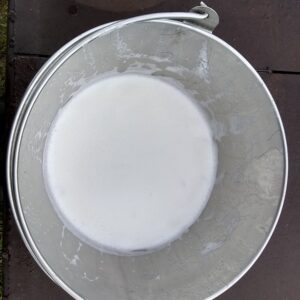
Raw milk contains enzymes and a diverse set of bacteria that give your feta or any cheese a superior and more complex flavor profile as it ages. Pasteurization kills these enzymes and bacteria in milk. However, you can reintroduce some of them when you make cheese, if you use either Kefir or raw milk clabber culture. Freeze dried mesophilic or thermophilic cultures will not replace these lost ingredients. Some people who use pasteurized milk, will add lipase, a powdered enzyme you can purchase, to reintroduce the stronger flavor that is missing.
Pasteurization also denatures the calcium in milk, and for this reason, if you use pasteurized milk, you might need to add calcium chloride back into the milk for it to set up well. You can sure try without it, but if your milk doesn’t set up well, add some calcium chloride to help with that next time. Adding calcium chloride can also increase the yield of your cheese, because less of the solids end up in the whey and go into your cheese instead. So, if you can, start with pastured animal’s raw milk.
For more information about the raw milk vs. pasteurized milk debate, I recommend this source.
Brine-Aged White Cheese and Feta Making 101
Cheese Cultures
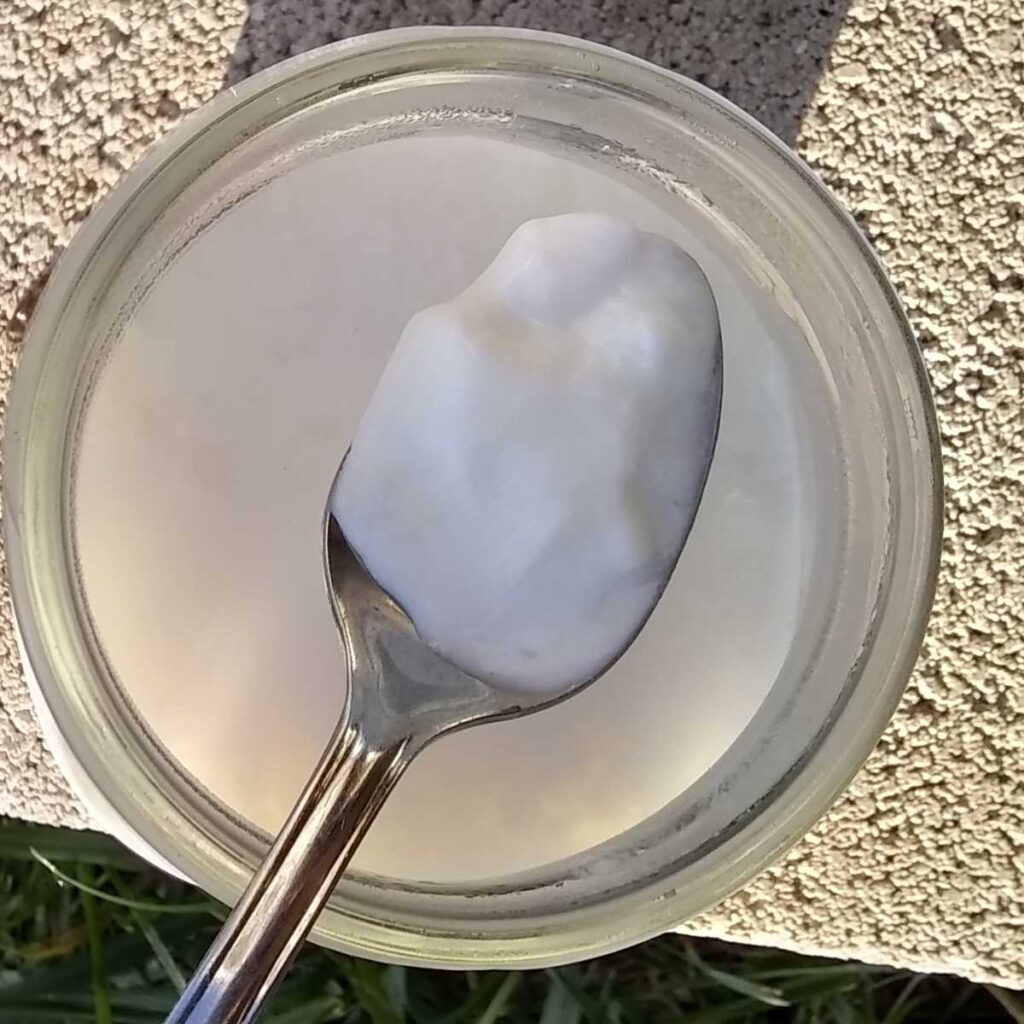
Most feta and feta-like cheeses use both, thermophilic (heat loving) and mesophilic (medium temperature loving) bacteria. This is because feta starts out at a higher temperature. This is where the thermophilic bacteria thrives and dominates. As it cools, it will turn on the mesophilic bacteria in the milk or starter culture. Then the thermophilic activity will slow down while mesophilic activity will increase and dominate.
In Bulgaria, when raw milk is used, it is used straight from the animal, still warm and neither heated nor cooled. Bulgarian thermophilic yogurt is added, or just a clabber culture. The yogurt is used as a starter culture to add thermophilic bacteria to the milk. And the cheese maker relies on the inherent mesophilic bacteria, that naturally reside in the raw milk, to help acidify the milk at room temperatures.
If you have access to raw milk to make your own clabber starter, or when using kefir, these cultures all have thermophilic and mesophilic bacteria existing within that can be used. So all you need is your homemade clabber culture or kefir to make this cheese. You can add yogurt as a starter as well, to give the cheese a certain direction, but it is not necessary.
However, if you don’t use raw milk and buy a specific freeze dried culture, they are specialized and can’t switch on any bacteria that is not included. So you’ll need to buy two cultures to make this cheese, or one specific mix that includes both. Below I’ll outline the different options and end with a recommendation.
Make Your Own Starter
If you have raw milk available, you can make your own starter culture by letting your milk clabber. These days, clabber is my favorite culture for all the cheeses I make, soft and hard. It makes better cheese, that is uniquely your own, it introduces a diverse mix of bacteria, it is full of live enzymes to help flavor your cheese, it is easier to digest and, for some people, the only way they can have any dairy at all. And if that’s not enough, it saves you money.
Even if you make your cheeses from pasteurized milk later, having your own raw milk clabber to start with will give you many advantages by being able to transfer all these living milk benefits into the dead milk from the store. So I find that it would be worth locating a source of raw milk from animals raised on pasture, to make your own starter.
This homemade clabber starter culture will act as both, thermophilic and mesophilic starter, so you only need this alone if you make starter with raw milk from scratch.
You can find out how to make your own mesophilic culture in my article about the natural cheese making process.
Whey
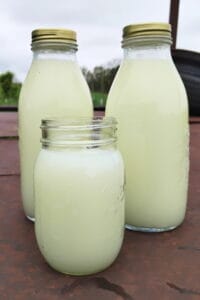
In the days of our great grandparents, when cheese was made pretty much daily to preserve the milk, fresh whey was always available and it was the starter culture they used to start the next batch of cheese. You can adopt that practice.
And so the easiest and most traditional way to culture your cheese is by using active whey from a previous batch of cheesemaking. So save some of the whey from this batch and use it for your next batch! You can freeze it if you don’t make cheese often. It will stay good in the freezer for 3-6 months. When you make your next batch of feta, you can use just the whey from this one, no need to mix two cultures. The bacteria for each is already in your whey!
Use a quarter cup of whey per gallon of milk. Of course, if you’re new to cheese making, you’ll have to make your first cheese to get whey, so here are your other options.
And the more you make cheese and use the whey from one batch to start another, the more distinct your cheeses will become. They will have terroir. Yours! 😍.
Kefir
I used milk kefir for years in all my cheese making and it yielded some beautiful cheeses, so I can recommend it, especially if you like drinking cultured milk. It’s an easy way to keep a lively probiotic cheese making culture at home, ready to use, and to have your daily cultured probiotic beverage.
Kefir does have yeasts in it, and so your cheeses will get a bit of carbonation, which makes for small holes in the cheese. It contains the most diverse mix of bacteria and yeasts, a few of which some people might not be able to tolerate, but for most it can be great for your gut health.
If you don’t have kefir and you’re interested in starting your own kefir at home, I recommend you get live milk kefir grains. You don’t need to mix cultures when using kefir. Kefir can act as both, thermophilic and mesophilic cultures.
Grocery Store Buttermilk
Buttermilk can be tricky, because not all commercial buttermilks contain live cultures, so be sure to check the label. Use 1/4 cup of buttermilk per gallon of milk. If you use buttermilk culture, you’ll have to add a thermophilic culture too, such as yogurt.
Grocery Store Yogurt
Use any plain yogurt from your grocery with live cultures in it. Greek yogurt works too. Look for a natural yogurt without any strange things added. Use thermophilic yogurt and a mesophilic culture like buttermilk together in this recipe. Bonus points, if you can find bulgarian yogurt.
Freeze Dried Yogurt and buttermilk Cultures
You can also use a freeze dried yogurt culture for this recipe and combine it with freeze dried buttermilk culture.
Freeze Dried Starter Cultures
There are so many cultures to choose from. Some are made especially for Feta cheese, and they will include both, thermophilic and mesophilic bacteria. I like to purchase my cultures separately so that they will be useful for more than one purpose. I rarely use purchased cultures anymore, but here are some I have used quite a bit in the past.
A multi-purpose culture I like is flora danica. It is one of my favorite purchased cultures that yields a buttery, creamy soft cheese. This culture is versatile and you get a large package that will last through a lot of cheese making batches especially if you make a mother culture, which can make it last even longer. It will keep in the freezer for years. It does add just a bit of carbonation, which will introduce some small holes throughout the cheese. This culture covers the mesophilic component. Dosage for flora danica is normally ⅛ tsp per gallon of milk (¼ tsp up to 5 gallons). But since we are using two cultures, use only 1/16 tsp per gallon of milk, and 1/16 tsp of a second culture. Add a yogurt culture or 1/8 cup of plain yogurt for the thermophilic part.
Here is a specific feta culture that combines both, mesophilic and thermophilic bacteria, so you only need this one for this recipe.
Summary on Choosing a Culture
So with all these choices, which one should you use??
Well, I suggest using what is easiest for you to obtain when you’re starting out. If your local store sells cultured buttermilk with live bacteria, by all means, use it and add plain yogurt from the same refrigerator case.
And if you’re already maintaining a milk kefir, that would be a great choice on its own.
In case that you need to purchase a culture, Flora Danica is a great culture for many soft cheeses, sour cream or semi-soft cheeses. Just add 1/8 cup of store-bought yogurt or a freeze-dried yogurt culture for the thermophilic part.
If you don’t care to mix cultures, you can get a specific feta culture.
If you have raw milk, making your own clabber starter culture is hands down my top recommendation!
Your Feta Must Be Prepared For Brining
Before you place your cheese into the brine, you must dry out the surface, or it will dissolve into the brine. So after draining your cheese, you’ll first dry-salt the cheese by salting all surfaces to pull out all the whey, and then it needs to dry at room temperature for a few days on a rack. Only when the surface is dry to the touch, and after a few more days of maturing, should it be placed into the brine. If you want to cut your cheese into chunks, so it fits into a mason jar or other glass jar you have, do so before salting and salt every exposed surface after cutting.
The Brining Process

Making a brine for brining cheese is a bit of a science in itself. If you just add salt to water, call it a brine and put your cheese in it, you’ll probably get a surprise next time you check on it and find a slimy, soft and mushy mess instead of that nice firm piece you added a few weeks ago. This is because the brine needs more than salt. It needs to have the same calcium content as the cheese, and it needs to have the same pH.
Most cheese making instructions tell you to measure the pH of the cheese at the time of brining and add vinegar to the water until it has the same pH. Then they tell you to add calcium chloride, to make the calcium content about equal to that in the cheese. Pretty complicated.
There is a better ‘whey’! And, as you might guess, the secret is in the whey! I learned this from David Asher’s book, The Art of Natural Cheesemaking and it’s brilliant! Here is what we’ll do: The whey that drains from the cheese curds, will have the same pH as the cheese, nod your head yes!
We will salt the whey and keep it at the same temperature as the cheese until the cheese is ready to be brined. There are a few days’ time as you’ll see later when you follow the recipe. But as the whey ripens alongside the cheese, the pH will be the same.
And the calcium content of the whey is also technically the same as that of the cheese. So no need to make any complicated calculations for adjusting the pH or worrying about the correct amount of calcium chloride to add. Using the whey for a brine, makes the process super simple.
Brine Maintenance
As the cheese ripens in the brine, keep an eye on it to make sure that the cheese chunks stay below the surface and if there is a bit of cream rising to the top, be sure to skim it off, this is where the mold can grow.
If I find some mold starting to grow on the floating cream, as long as it doesn’t start growing into the cheese, I just skim it off and let it continue to ripen. Use your own judgement here. If in doubt, throw it out. I like to keep a glass fermentation weight on my cheese to keep it from floating up to the top. Makes for less of a chance that it will get contaminated.
Draining Area
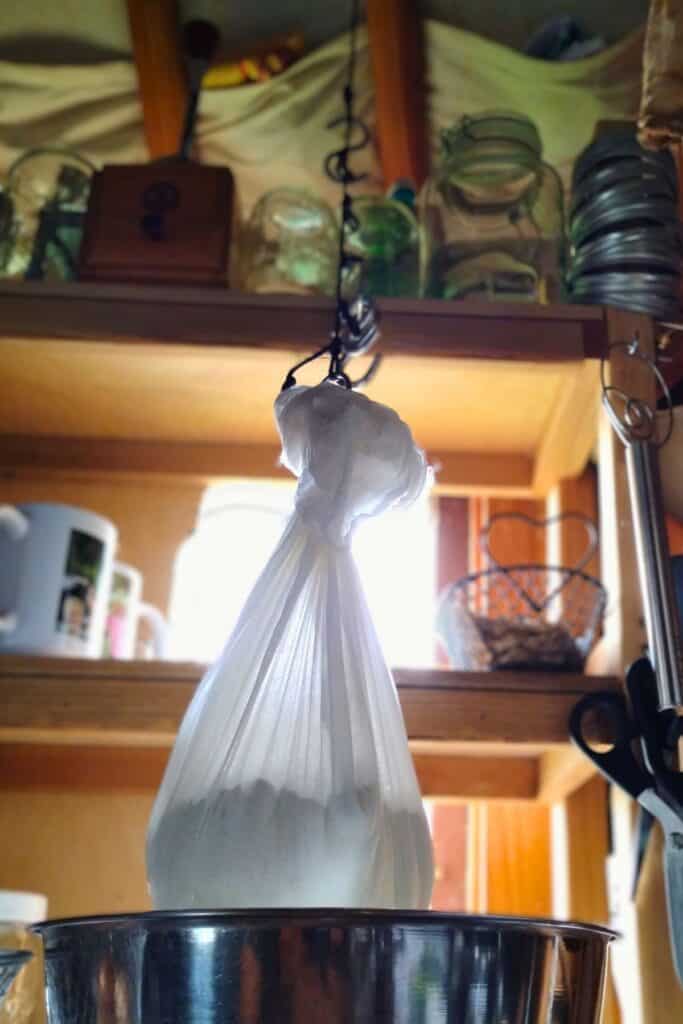
I hang my bags of cheese from a hook. For this, I keep a rope with many loops that hangs from a rafter and this way I can put the hook into one of the loops and easily raise it up if the bag starts touching the brine.
You’ll also need to set up a pressing station. You don’t need a cheese press for this cheese. We’ll just tie the cheese up tightly in the cheese cloth and put a weight on it, which will press out the the whey and firm up the cheese.
For this I use a pot or bowl, place a colander in it, add the bag of cheese, put a board on top and a weight, such as a rock, a jug of water, or a full canning jar. You’ll want the weight to be about half of what the weight of the cheese is, but I don’t weigh mine.
How To Make Sirene Cheese
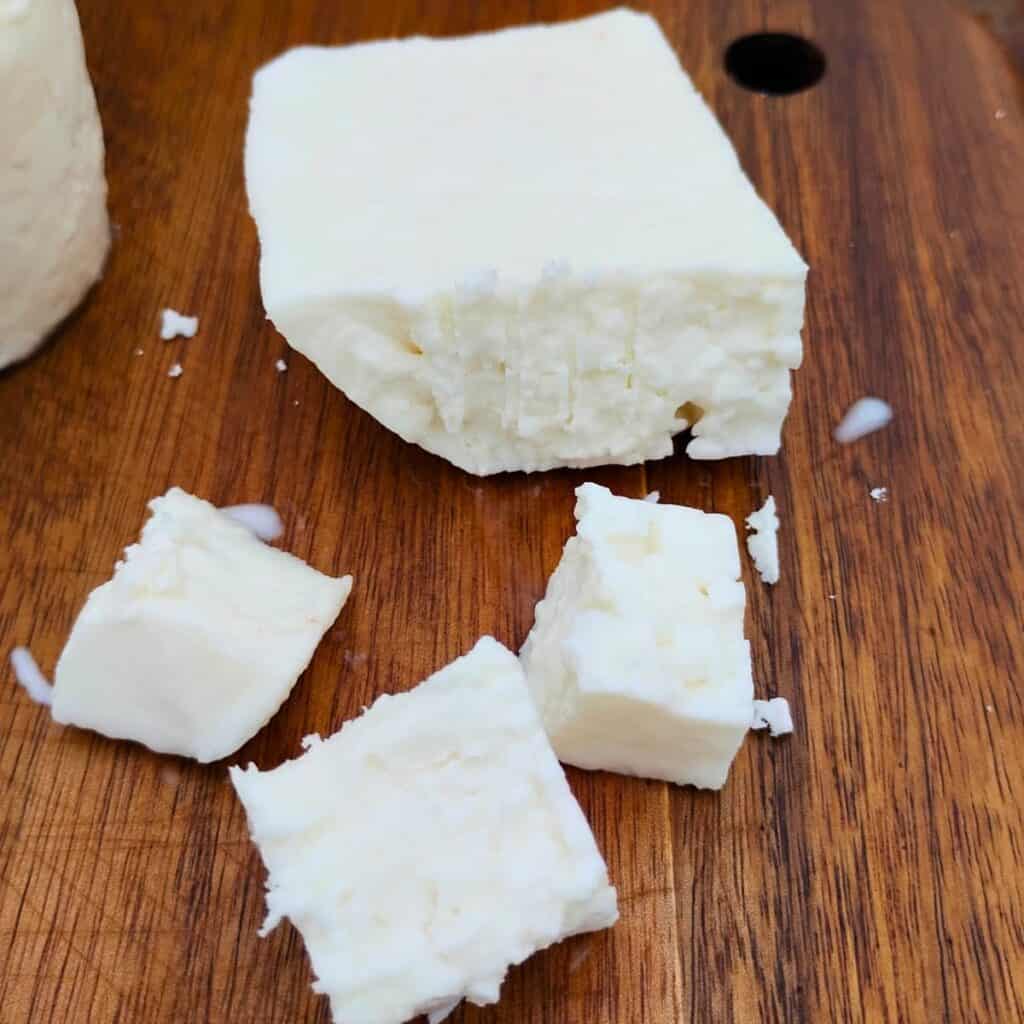
Ok, now that we got the Feta 101 tutorials out of the way, let’s make us some sirene cheese.
Equipment
A large 6 qt pot – for heating and culturing the milk. If you want to scale up, here is a 12 quart stock pot that is a perfect size for a 2 gallon batch of milk. I prefer to make 2 gallon batches. Same amount of work and you get twice as much.
Thermometer – I’ve been using this one for almost a decade and it’s awesome. It has a long enough stem for large batches of cheese in even in a big 40 quart pot too.
A skimmer – Highly recommended for all cheese making. It is a flat spoon with holes. Alternatively you can use a slotted turner for stirring and a flattish bowl, ladle, or measuring cup for scooping out the curds.
Long Knife – For cutting the curd.
A cheesecloth – Do not use the kind from the grocery aisle. It won’t work. Use a flour sack towel, tea towel, piece of muslin, butter muslin, or cheesemaker’s cheese cloth. Cloth diapers work really well too for one gallon batches of this recipe, but they are too small for a 2 gallon batch. You can also use a nutmilk bag, but I don’t like how the seams are impossible to clean well.
Measuring cups – For diluting your rennet and measuring the starter culture. If you use lipase and calcium chloride, you’ll need to dilute those too.
Measuring spoons – You’ll need a micro measuring spoon if you want to be exact measuring the rennent. But you can just count 12-15 drops.
Colander – To press your cheese.
Board – Or large plate to place on your cheese for pressing.
Large bowl – For catching the whey
1 quart mason jars – for making the aging brine and for aging your cheese. You will have to cut your cheese to fit into a regular canning jar. I also like these half gallon jars with a wider mouth to fit your cheese a little easier.
Ingredients
Milk
Starter Cultures
Rennet
Filtered Water
Salt
Calcium Chloride, optional
Lipase Powder, optional
Milk
I highly recommend using raw milk for many reasons as you can read in the previous section.
Goat’s milk and sheep’s milk are traditional for feta cheese, but since we’re making sirene, you can make it with cow’s milk too, just be aware that the flavor will be milder and the color will not be white as in traditional feta. You can add goat lipase powder to intensify the flavor. Using goat rennet can also help to add in those stronger flavored enzymes, but it will be more subtle than using the powder.
Avoid ultra-pasteurized milk. It has been altered and damaged too much by high heat pasteurization to be useable for cheese making.
Starter Culture
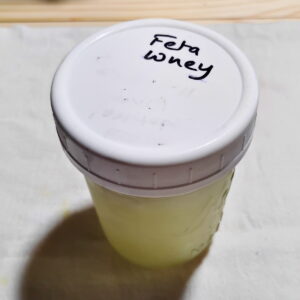
Homemade starter culture, backsloppped whey from your last cultured cheese making, kefir, buttermilk and yogurt together, or the appropriate starter culture powder (use as directed on the label and use half of the amount for each, the thermophilic and mesophilic culture). See the previous section about details.
Rennet
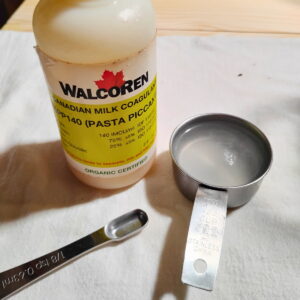
Tablets or liquid rennet, either works well. Be sure to dissolve it in about ¼ cup of filtered water before adding to the cheese. My favorite are Walcoren Organic Kid Rennet Liquid or Walcoren Kid Rennet Tablets, they help intensify that feta flavor. I prefer the liquid over the tablets, but they both work great, and not just for goat cheese. And I just found out that Walcoren makes lamb rennet now too, I would consider that a top choice.
You can also use Animal Rennet or Vegetable Rennet, which add milder enzymes, but vegetable rennet might also add a bitter flavor too during aging.
Filtered water
Avoid chlorinated water such as tap water. Chlorine is meant to kill bacteria and we need those! Bottled water will work too. I like to filter my trucked-in well water or rain water with my Royal Berkey filter unit.
Sea salt
My favorite salts are Redmond’s Real Salt, Himalayan pink salt, or Celtic sea salt. They add valuable minerals to your diet that are absent in many other salts. Important: use a salt without additives! It should only say salt on the label, so avoid table salt.
Optional
Lipase Powder – Add lipase to intensify the sharp flavor of the cheese if you like. Add 1/16 – 1/8 tsp per gallon of milk. Dissolve in 1/4 cup of filtered water half an hour before adding to the milk at the same time as the culture.
Calcium Chloride – Calcium chloride helps your curds set more firmly, helps with drainage and can increase your yield. Especially helpful when you work with pasteurized milk which has a weak calcium content. Use 1/4 tsp per gallon of milk and dilute it in 1/4 cup of filtered water before adding. Add 1/16 tsp to the brine too if you add it to the milk.
Instructions For Making Sirene Cheese
Warm the milk
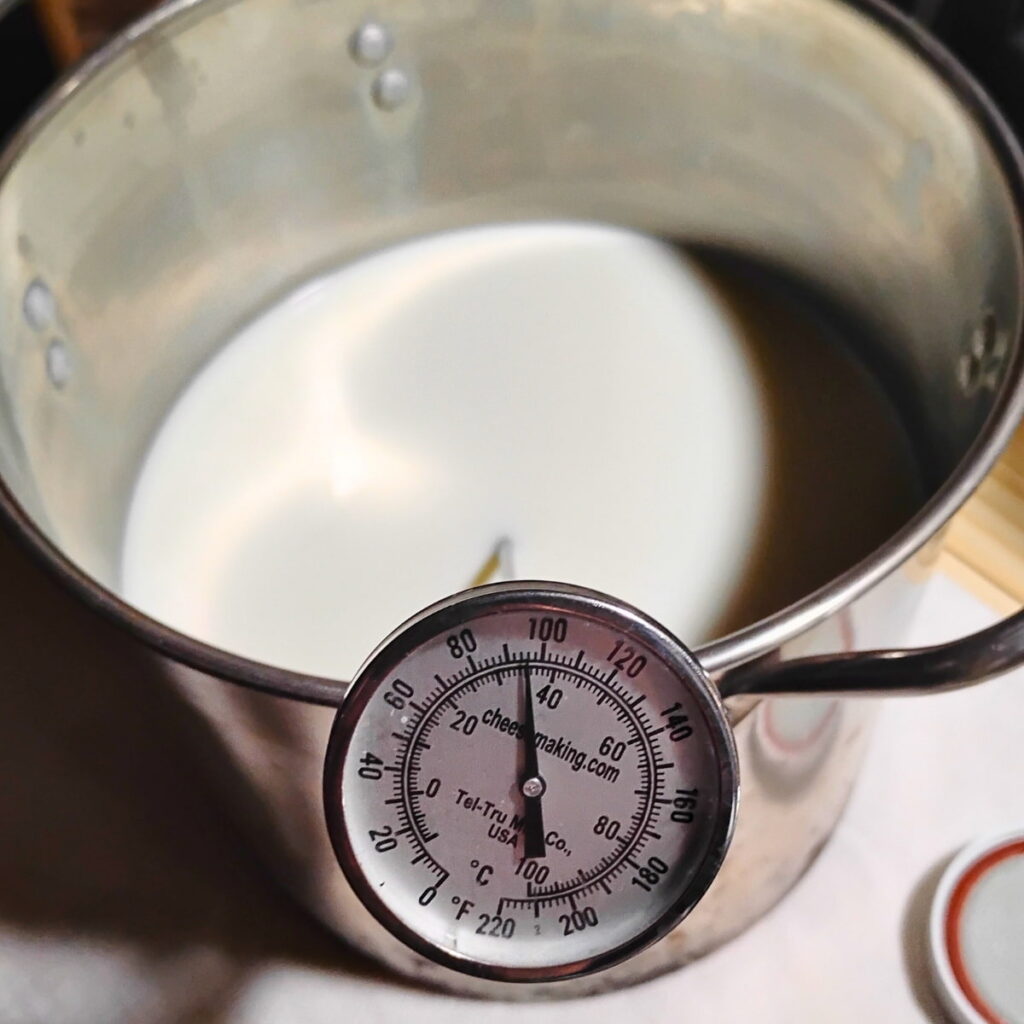
If you’re going to use lipase powder, stir it into some water to hydrate it before you start, it will need about a half hour of soaking before it’s added to the milk.
Slowly warm the milk to 95 degrees. This will activate the thermophilic bacteria if you start with raw milk.
Add culture

Pour your culture into the milk and stir well. If you use freeze-dried culture, sprinkle it over the top and let it hydrate for 2-3 minutes before stirring it in. If you’re adding clumpy yogurt, you can stir it into a little milk to break it up before adding it to the pot.
In case you decide to use calcium chloride and/or lipase powder, add them at this time. They both need to be diluted.
I like to culture mine for an hour before adding the rennet to increase the acidity, but it is not necessary.
Add rennet

Dilute the rennet in ¼ cup of filtered water, pour over the milk and stir well with the skimmer but not too vigorously to mix everything. try to avoid making foam. I count 20 up and down motions when I stir and try to stay below the surface of the milk with your spoon while stirring. You don’t want to stir too long, since the rennet will start setting up the cheese almost immediately and if it gets disturbed, it can’t do it again.
Use your utensil to stop the motion of the milk as best as possible. Place the lid on the pot and let it stand for the next 1-2 hours where it won’t be disturbed.
I like to wrap a towel around it to keep the temperature inside the pot warm for as long as possible, to keep the temperature more even throughout the milk, and to keep any fruit flies away that seem to find their way into the pot somehow.
As the milk ferments and the rennet enzymes go to work, it will become more acidic, form a yoghurt-like curd and sink below the whey surface.
Check And Drain The Curd
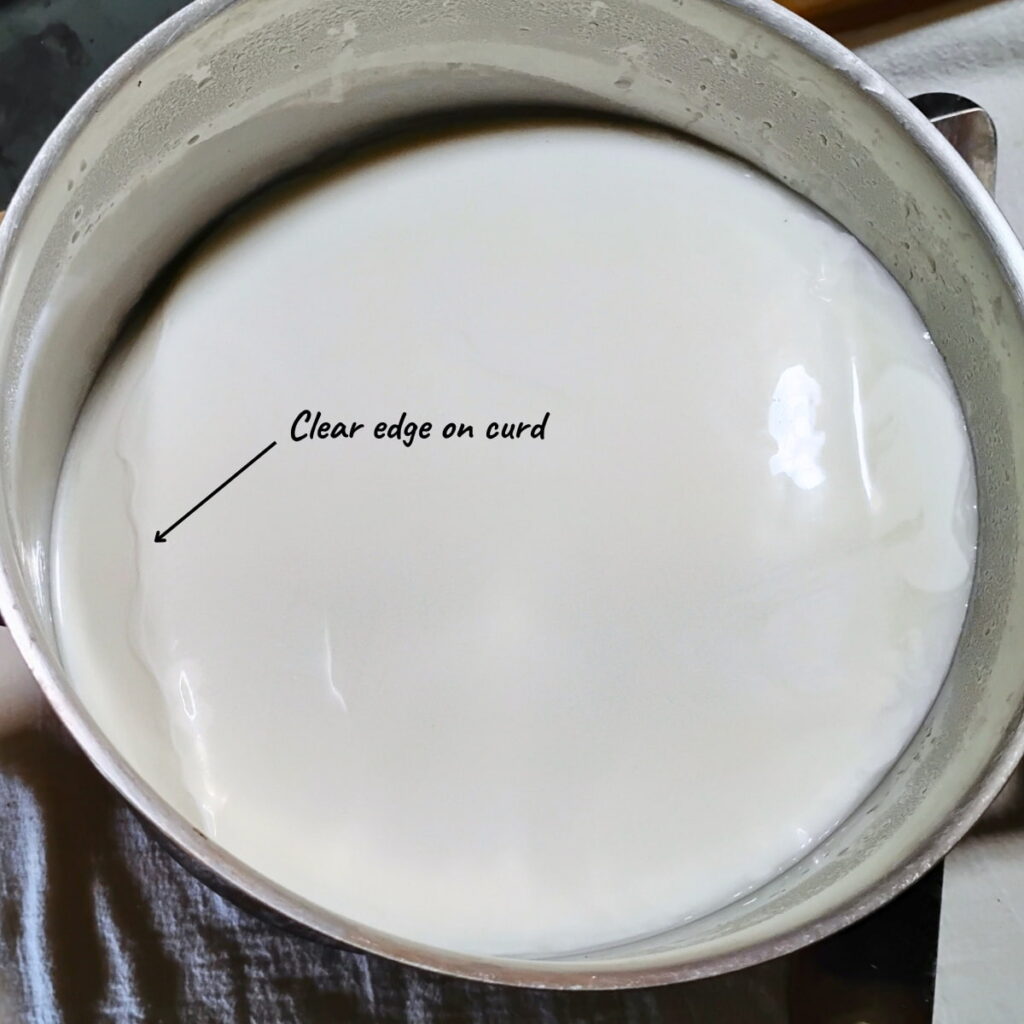
After an hour, check on the curd. Has it solidified? Do you see a soft cake in a pool of whey? When tilting your pot slightly and very carefully, can you see a clear edge on the curd? If so, it is ready to drain. If not, leave it alone and check on it every 15 minutes till it looks good. Keep checking, you don’t want to over-ferment it, but you also don’t want to cut into it too early, or you’ll lose a lot of the solids to the whey and you’ll end up with a hard cheese. It should be about the consistency of regular yogurt.
Cut the curd
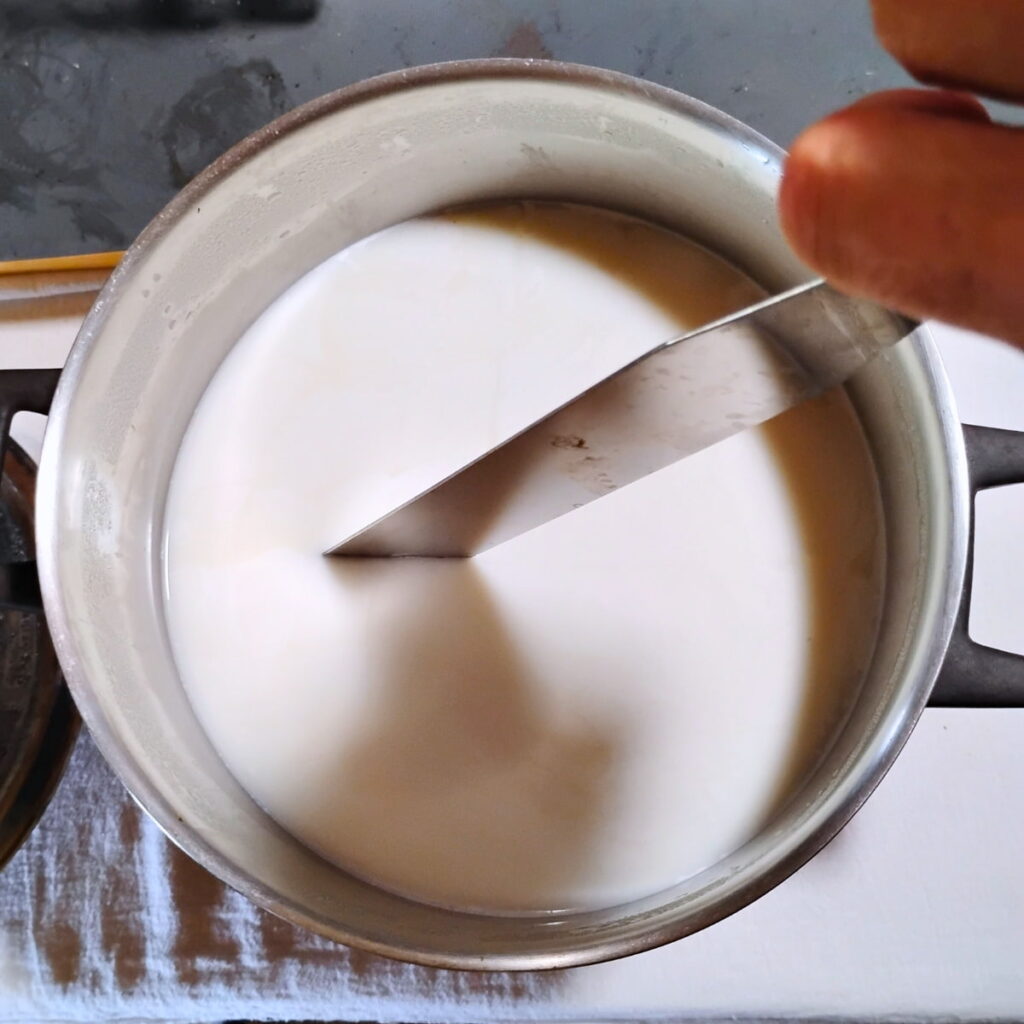
Now you need to cut the curd to help release the whey. Take a long knife and cut a grid into the curd by making a long cut all the way to the bottom of the pot and accross, then cut 1-2″ away from this one and so on. Make the same cuts now perpendicular to the first cuts. We want fairly large cubes.
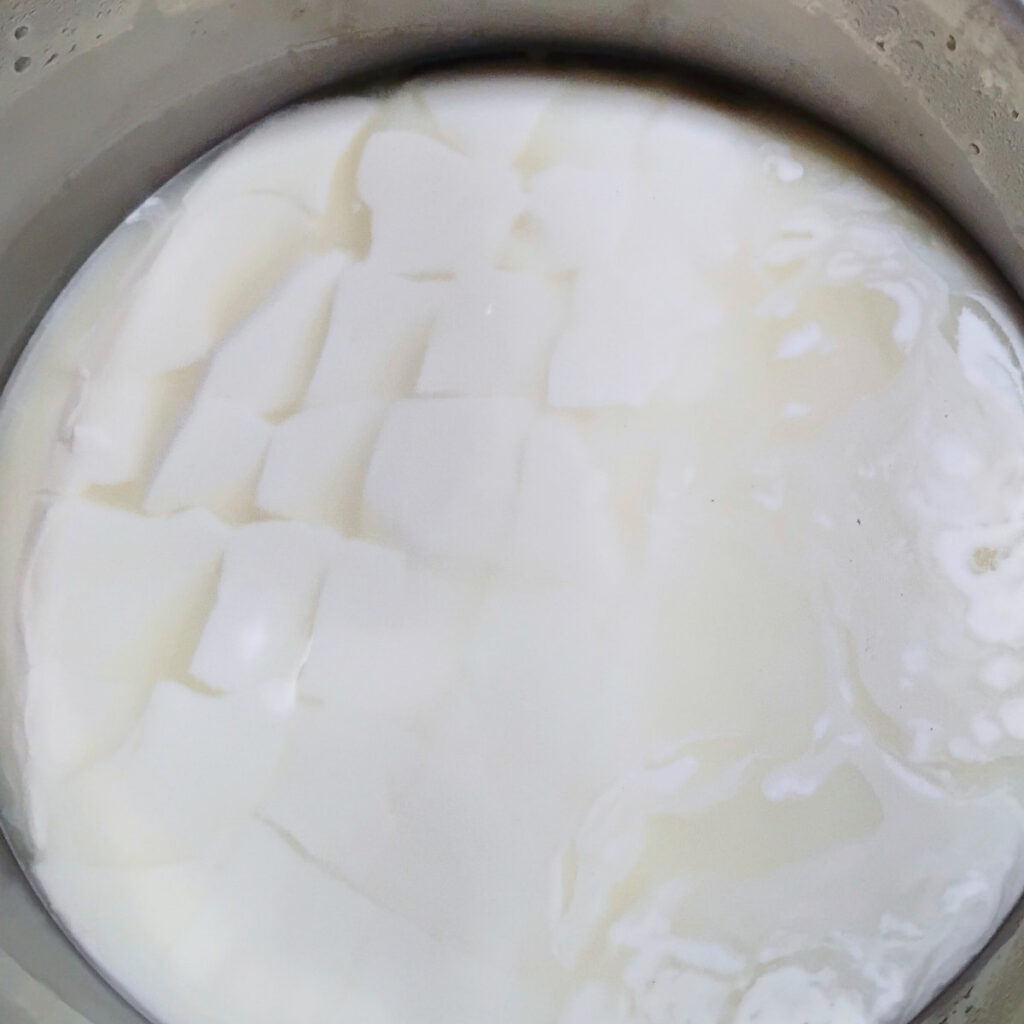
Leave the curds to heal for 15-30 minutes.
Transfer the Curd
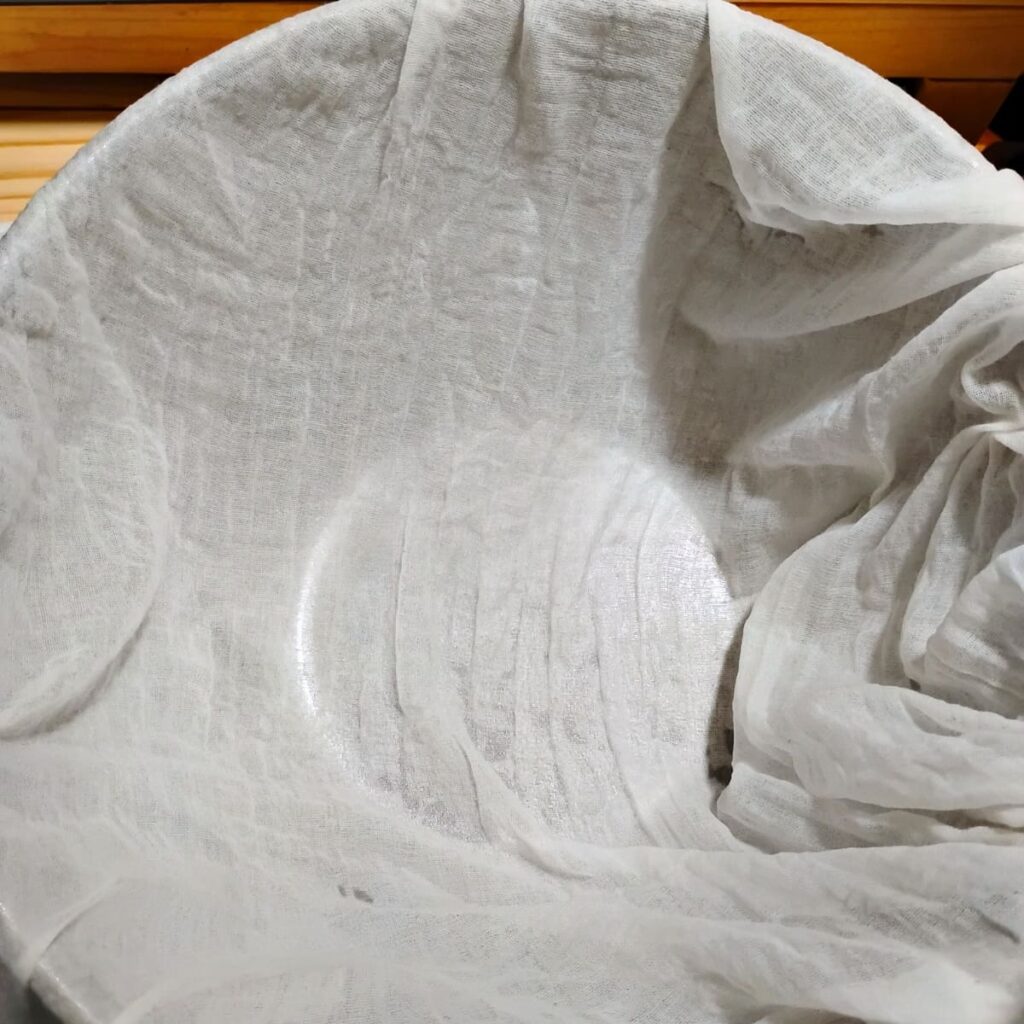
Line a large bowl or pot with a damp cheese cloth (use filtered water to wet the cloth).

Take your skimmer, a shallow bowl, or a ladle. I misplaced my skimmer and my ladle was in a pot of soup, so I used a measuring cup, which worked quite well.

Start scooping the curds into the cheese cloth. This acts as horizontal curd cutting.
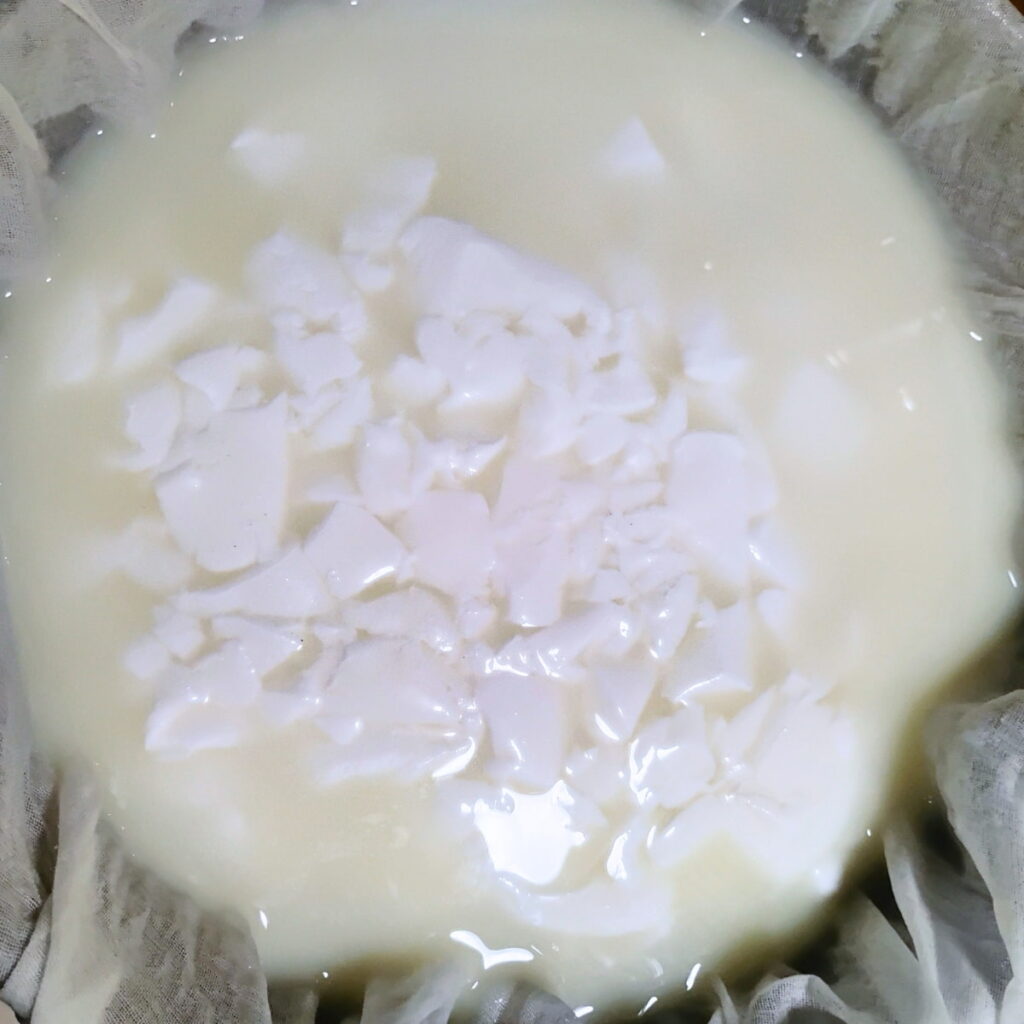
Once you have all the curds transferred, its time to drain them.
Draining The Curds
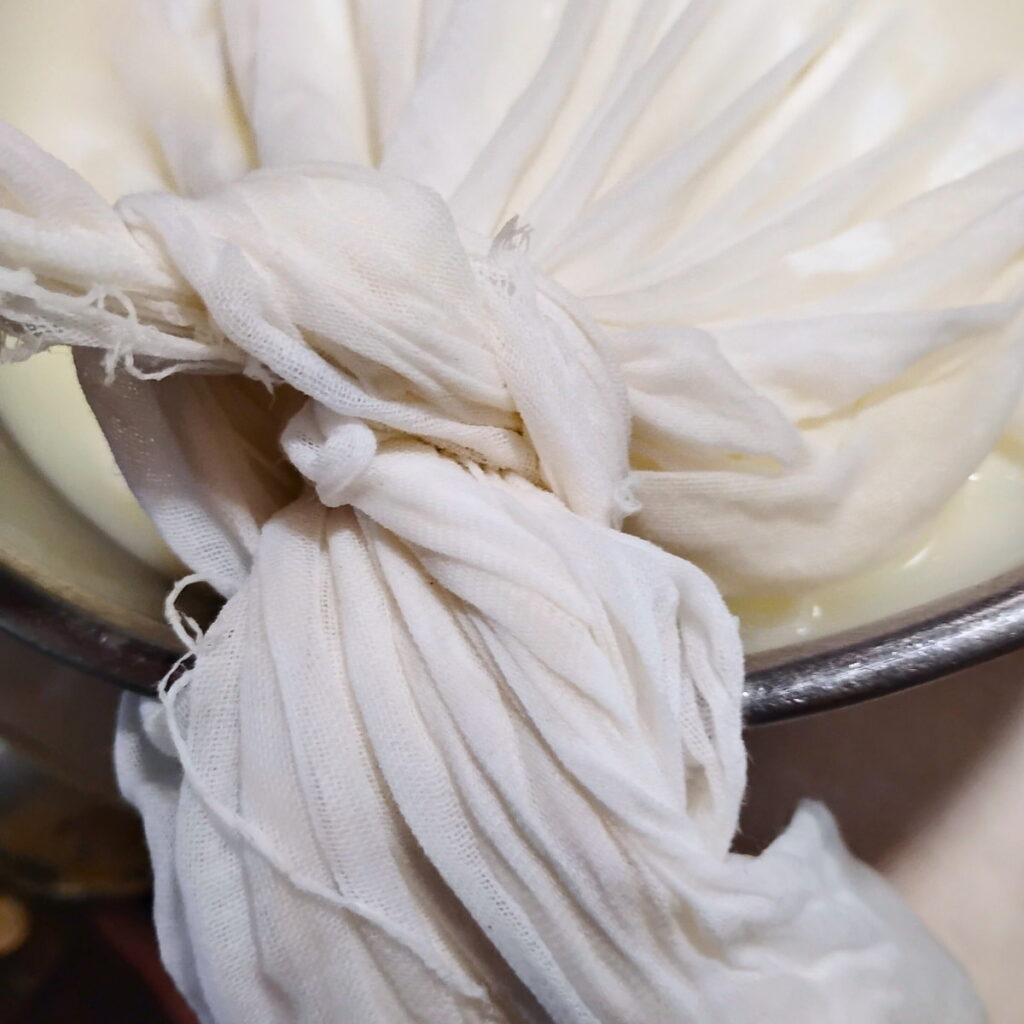
Take 3 corners of the cheese cloth into one hand and take the fourth to go around the outside of all of them. Tie a knot and double knot with another corner.
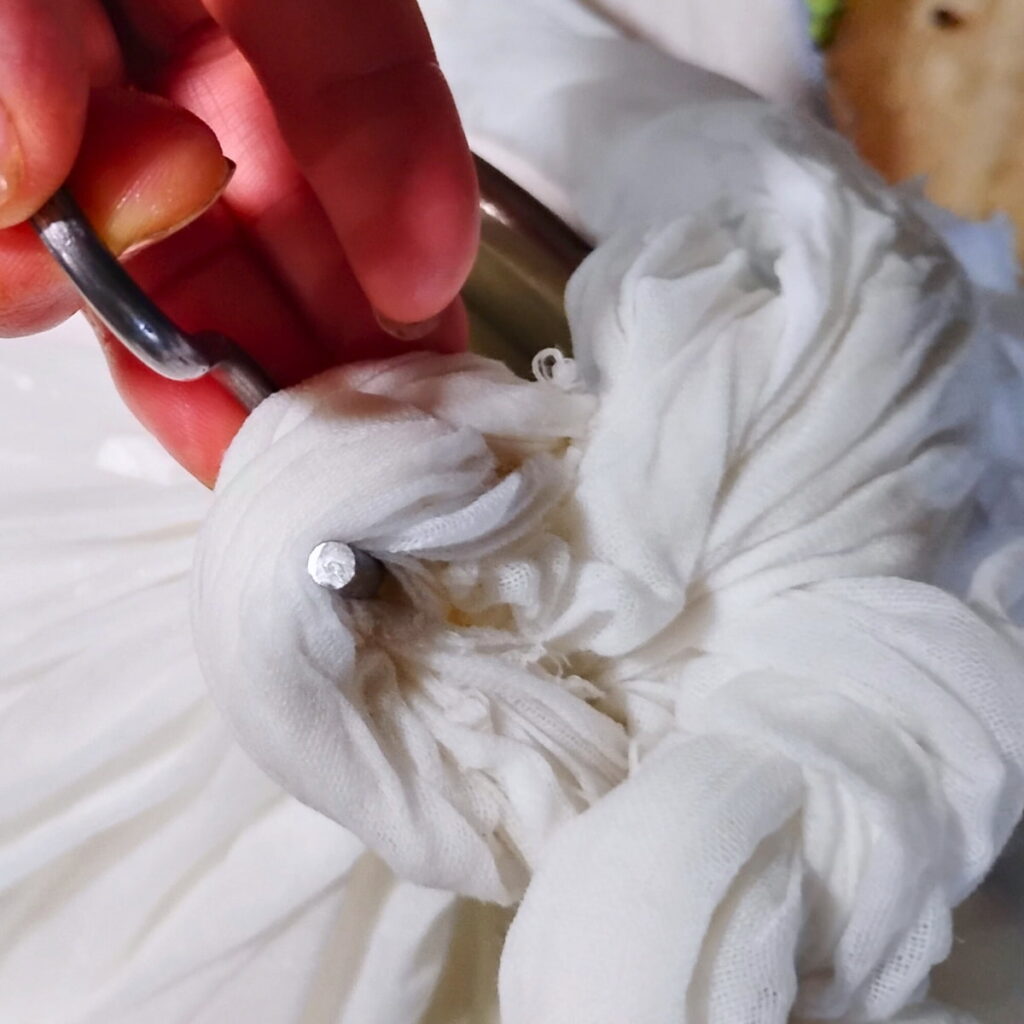
Put it on a hook and carefully lift it by the hook to make sure it holds.
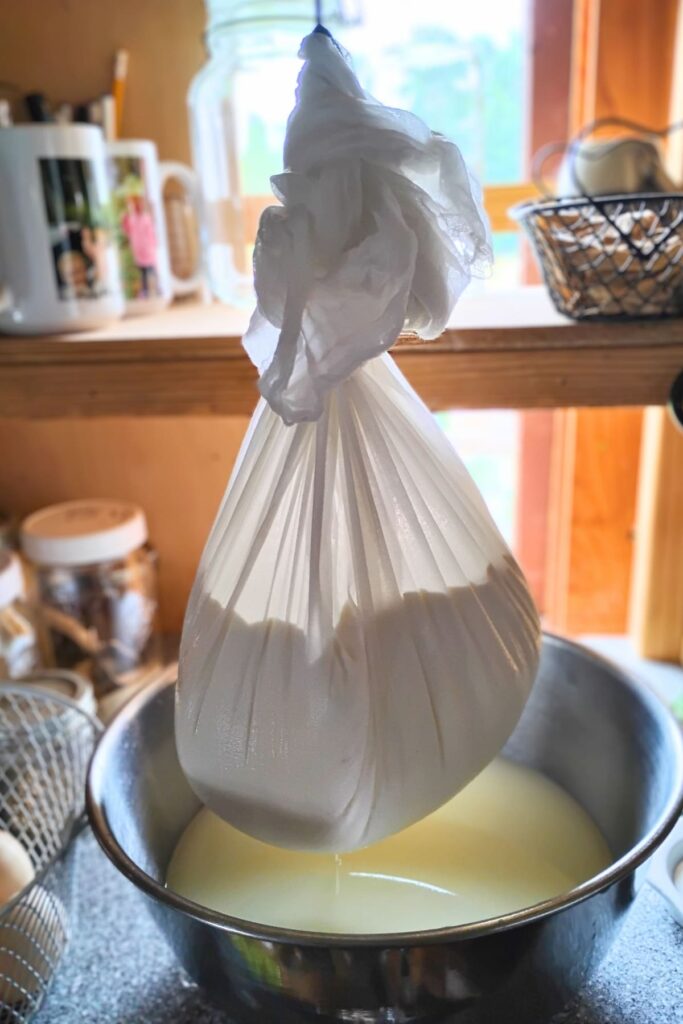
Then and hang from the ceiling, a cabinet knob, or a long wooden cooking spoon or dowel that’s resting on the edges of a large pot. The whey should run out as a small and steady stream. Let it pre-drain for an hour and a half.
Pressing the Cheese
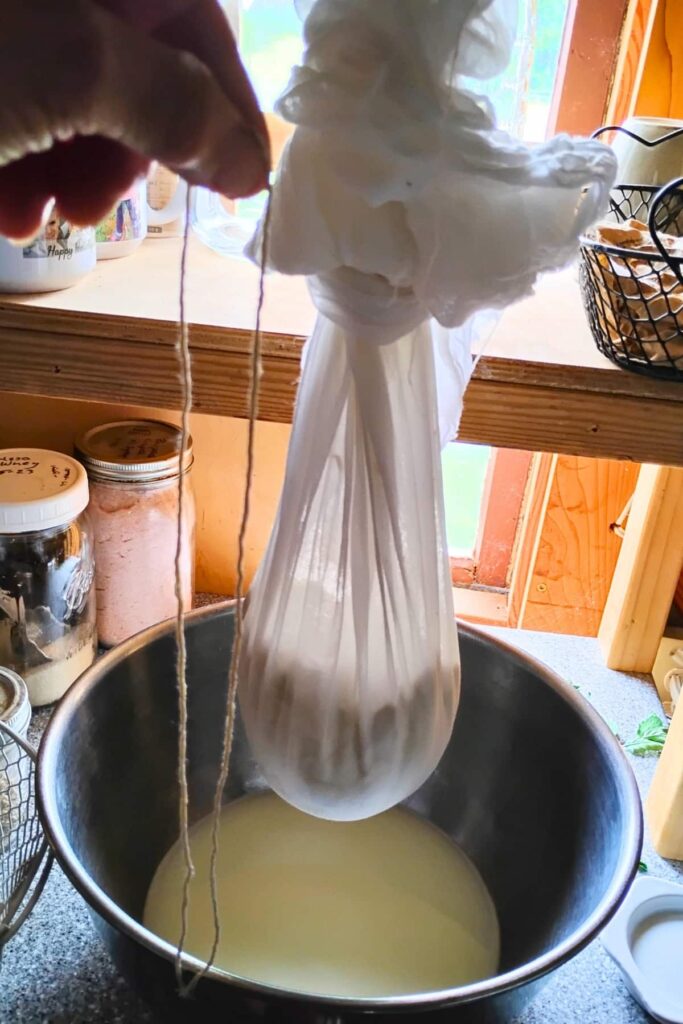
Squeeze your curd a little and take a string to tie it up.

Tie it into a tight ball just above the curds.
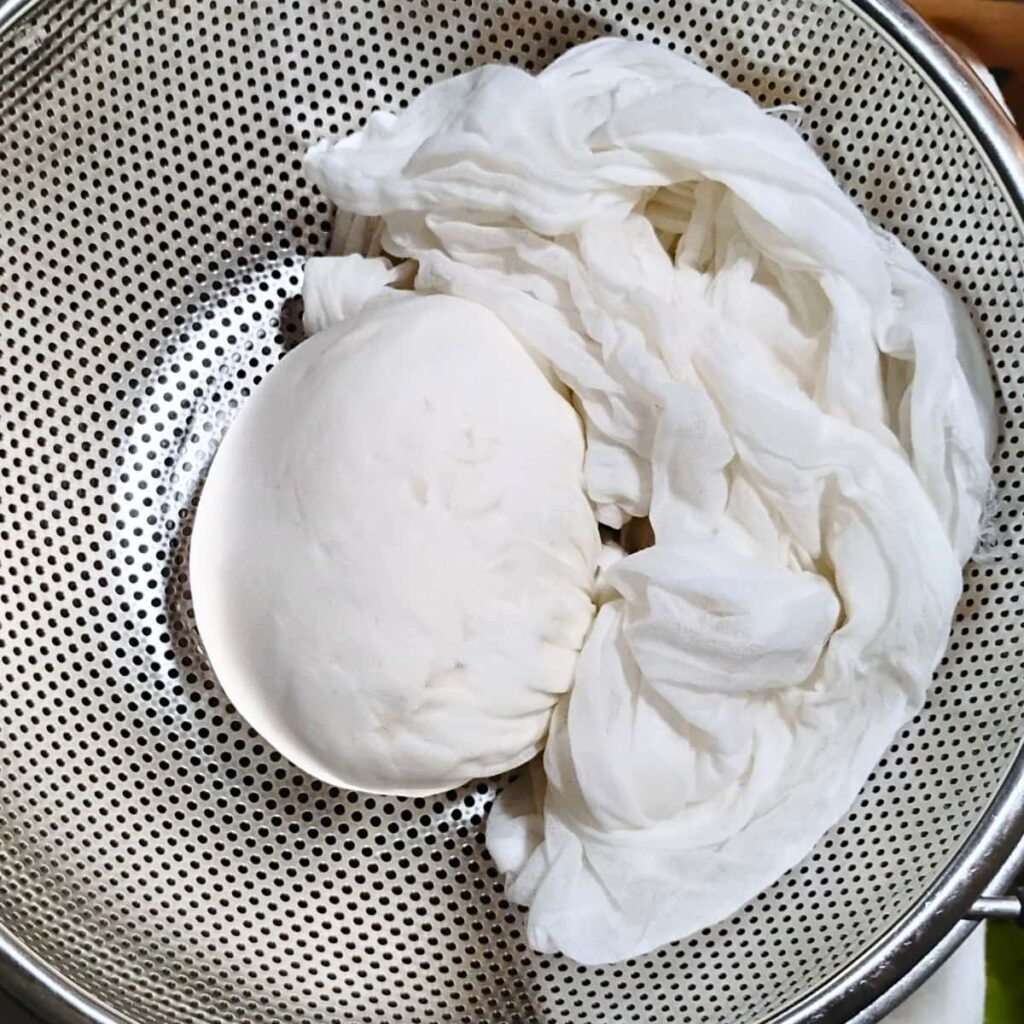
Place the bag of curds into the colander and the colander into the draining bowl.
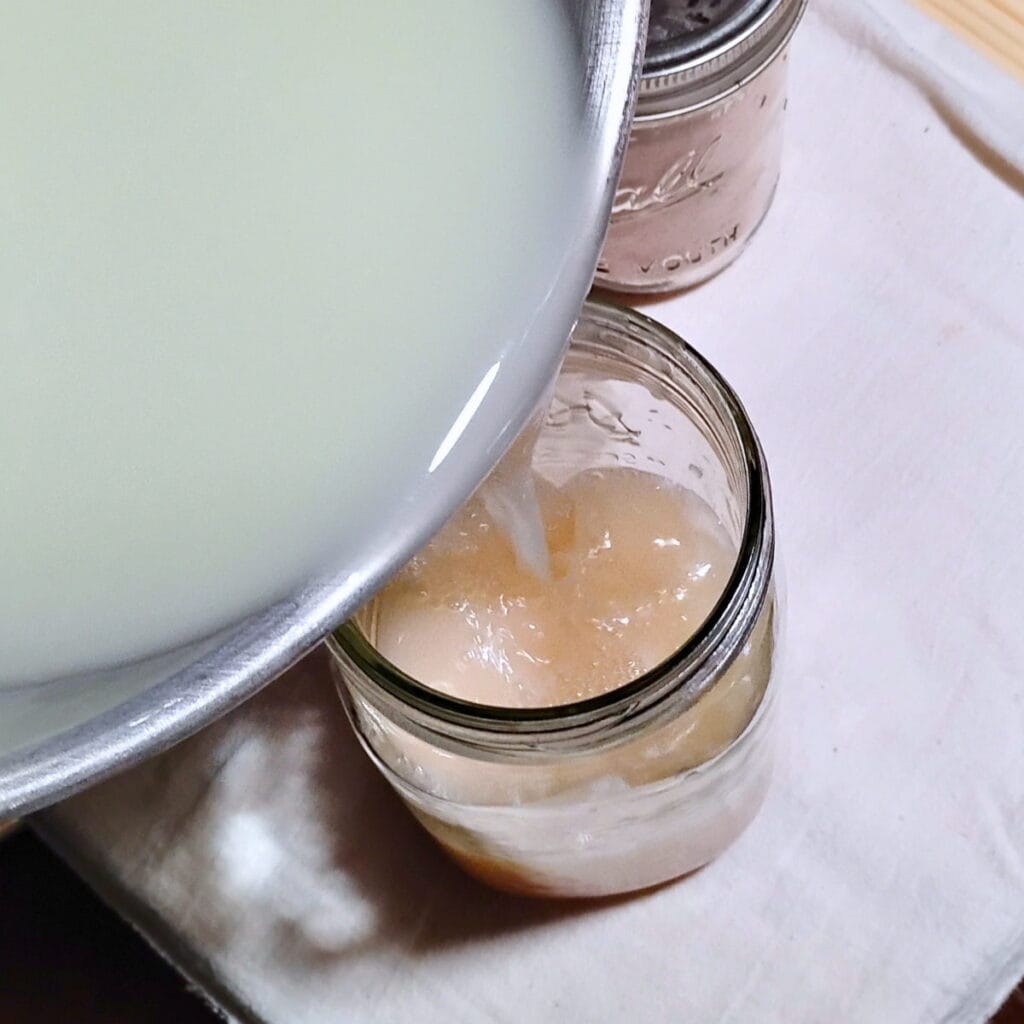
I like to pour off all the whey into the fermentation pot before I do this, and at the same I save a quart of the whey to make the brine later and a cup or two for my next batch of cheese.
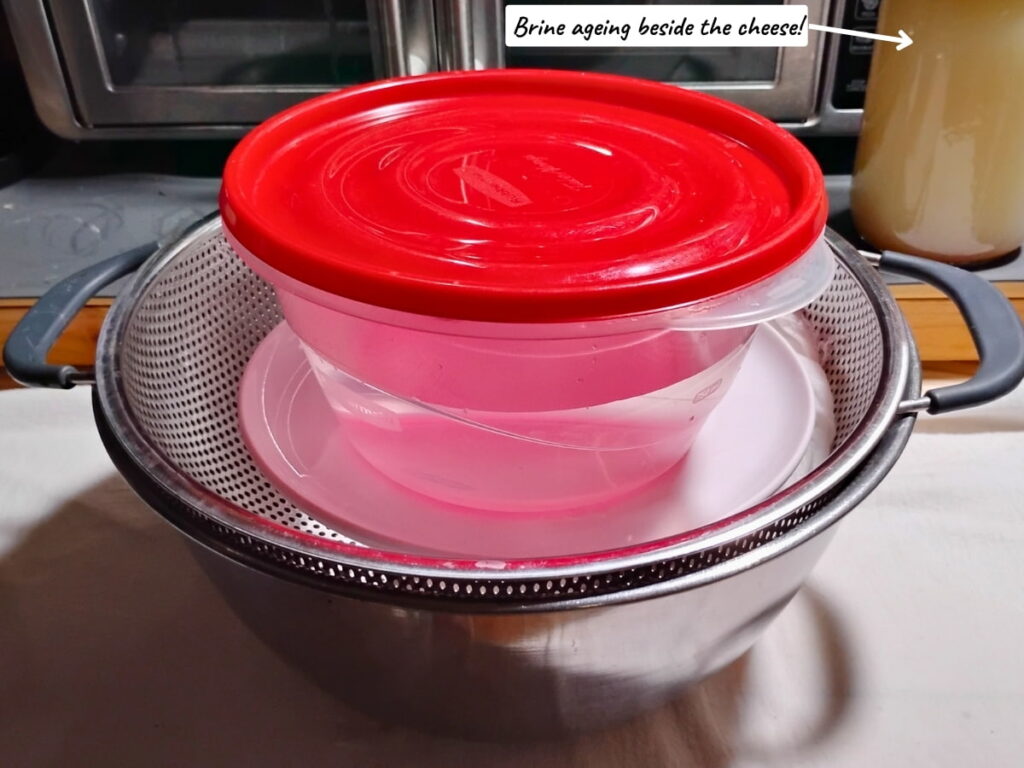
Now put a board or a plate onto the cheese and place a weight on top. I just used a bowl full of water with a lid so it doesn’t make a mess if it tips over. You can use a clean rock too, or a jug of water.
If you happen to have a cheese press and cheese forms, you can certainly use those instead of rigging up a press.

Press the cheese for 6-10 hours or overnight up to about 24 hours.
Prepare Your Brine
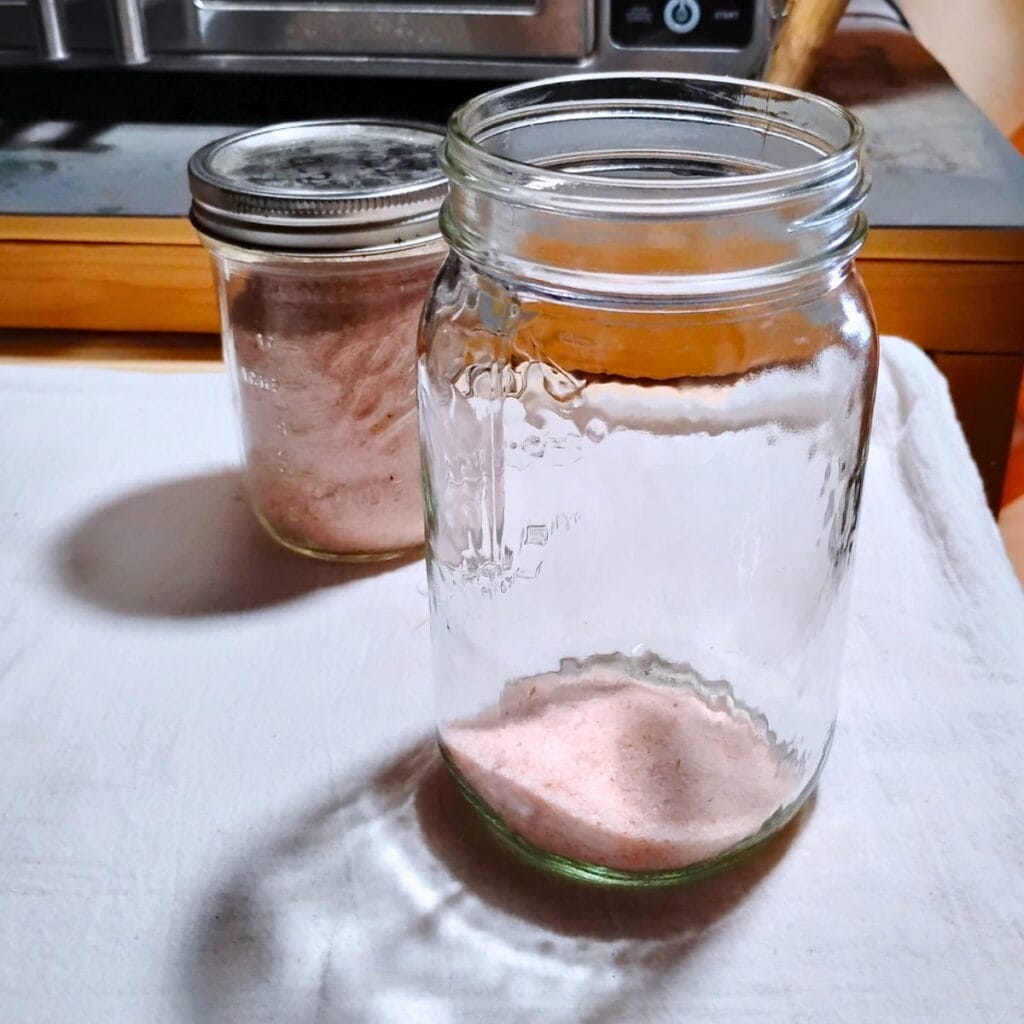
Make your brine when you salt your cheese. Your brine will be made with the same whey that was draining from your cheese. Add ¼ cup of salt to a quart jar to make a 7% salt brine. Pour enough whey to fill the jar. Stir well to dissolve. Seal it with a lid and let it sit beside your cheese to ferment at the same rate. The temperature of both needs to be the same for them to acidify at the same rate. If you have pH strips, you can measure your pH before brining. It should be about 5.0 or a little less.
Salting The Cheese for Immediate Fresh use

Unwrap the cheese and taste it if you like. Now it needs to get salted. If you want to eat it fresh and not age it, cover all surfaces with salt and put it in a deep plate, on a tilted board or a rack to drain some more. After a few hours you can eat it. Wrap the rest up and it should keep in the fridge for a week or two.
Salting The Cheese For Aging
You’ll want to age the cheese in brine to make it feta-like, so you need to follow a few more steps.
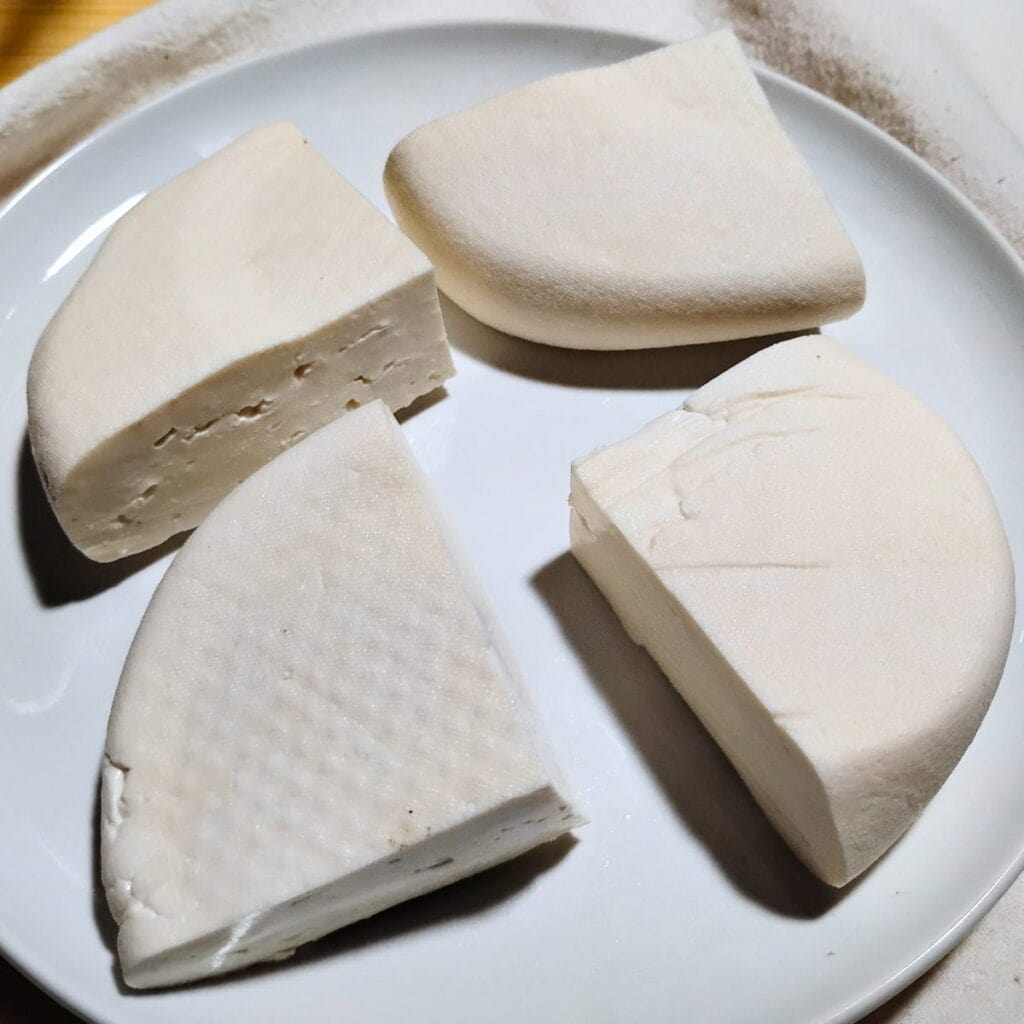
Cut the cheese into chunks that will fit into your aging container. I like to use a wide mouth mason jar. Its opening is not that big, so keep that in mind.
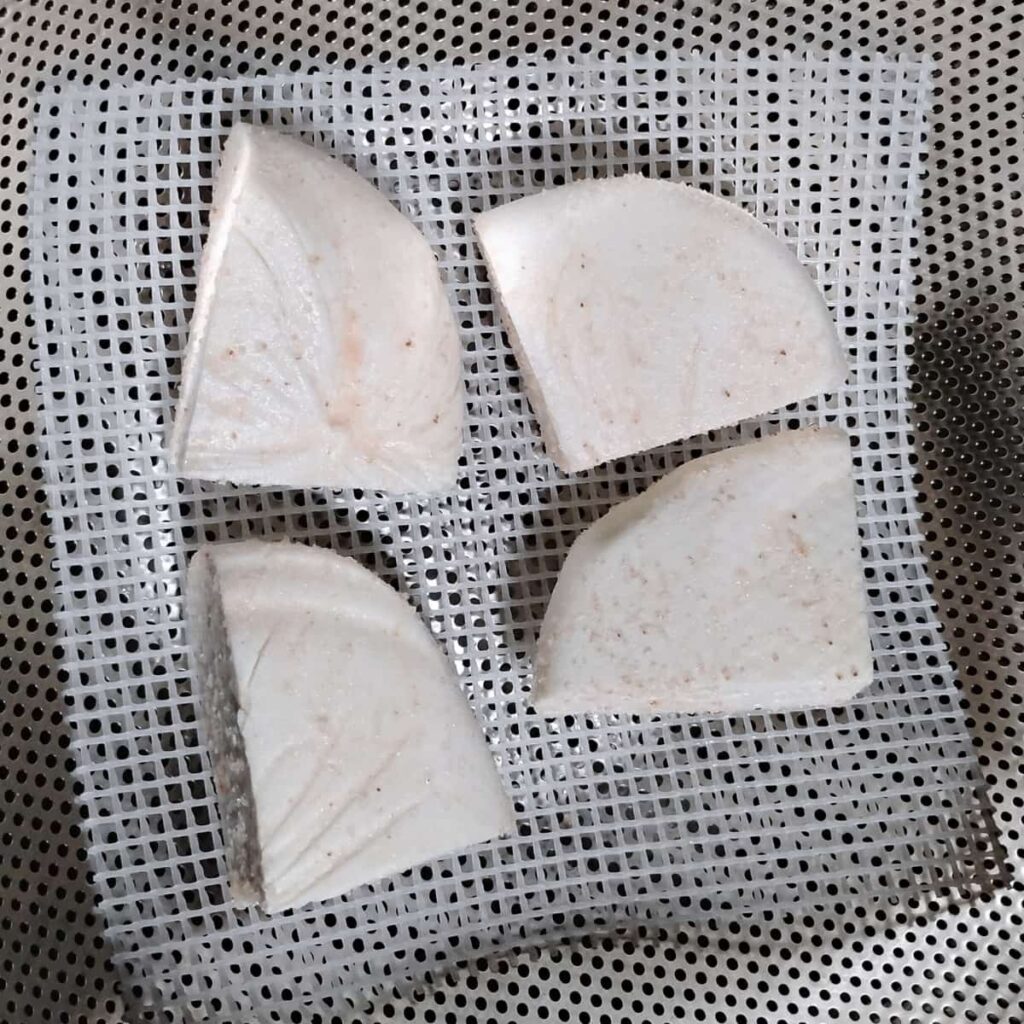
Salt all the edges of every chunk lightly and set it on a draining mat on top of your colander, a cooling rack or other rack. It needs to drain freely. I find that it dries best when it has much airflow around it and prefer to place it on a rack.
Drying The Cheese

Over the next 3 days, flip every day one or two times and lightly salt the wet surface some more. Once the cheese is dry to the touch, it can go into the brine. If it’s not dry yet, keep it out until it is. I use a screen tent to keep the flies out.
Brining The Cheese

Place your dried chunks of cheese into the aging jar and pour the prepared brine down the sides into the jar to fill it up to the top. I like to place a weight on top if there is room, to keep the chunks below the surface of the brine. This will prevent mold to grow on it.
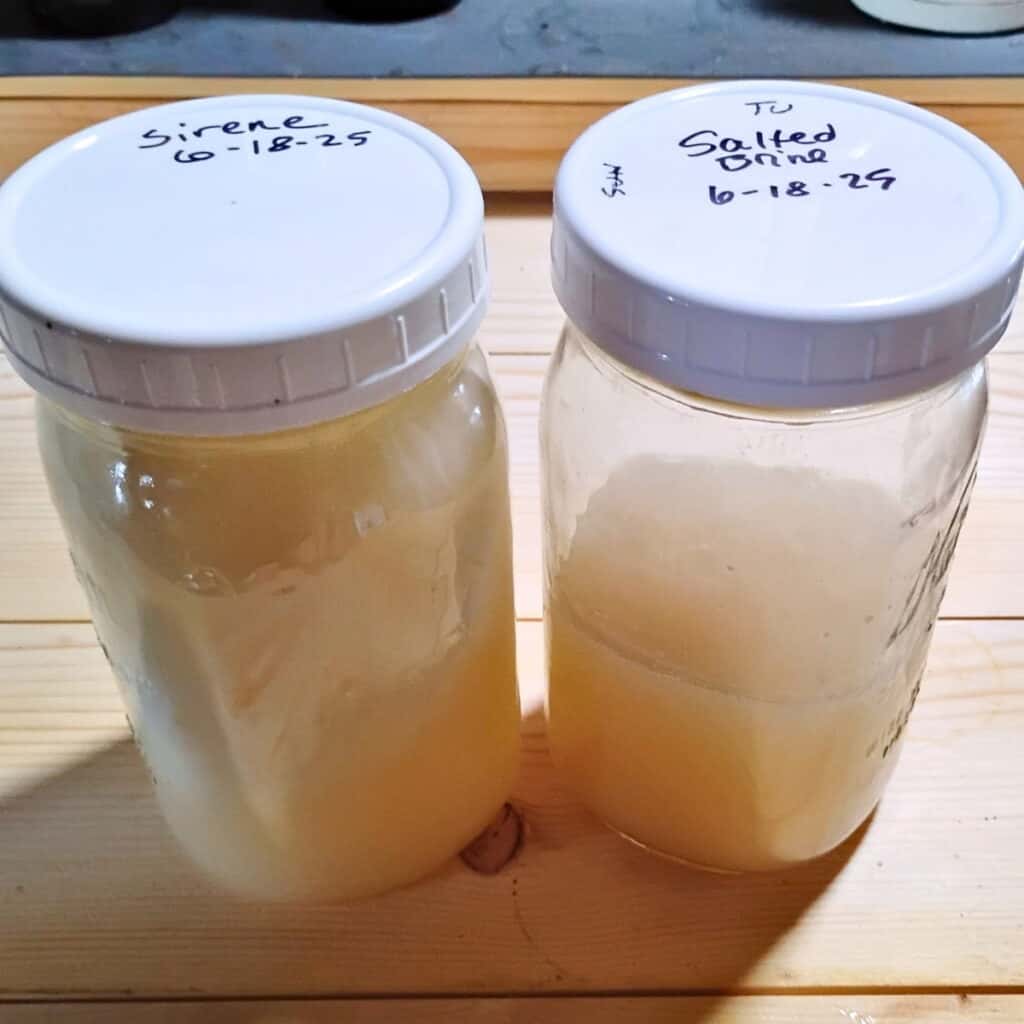
Now seal the jar well and age it for 2 weeks at cheese cave temperature (50-55 degrees), in a cellar or in a cool spot in your house. After that you can put it into the refrigerator to age longer. It should keep for at least 6 months this way.
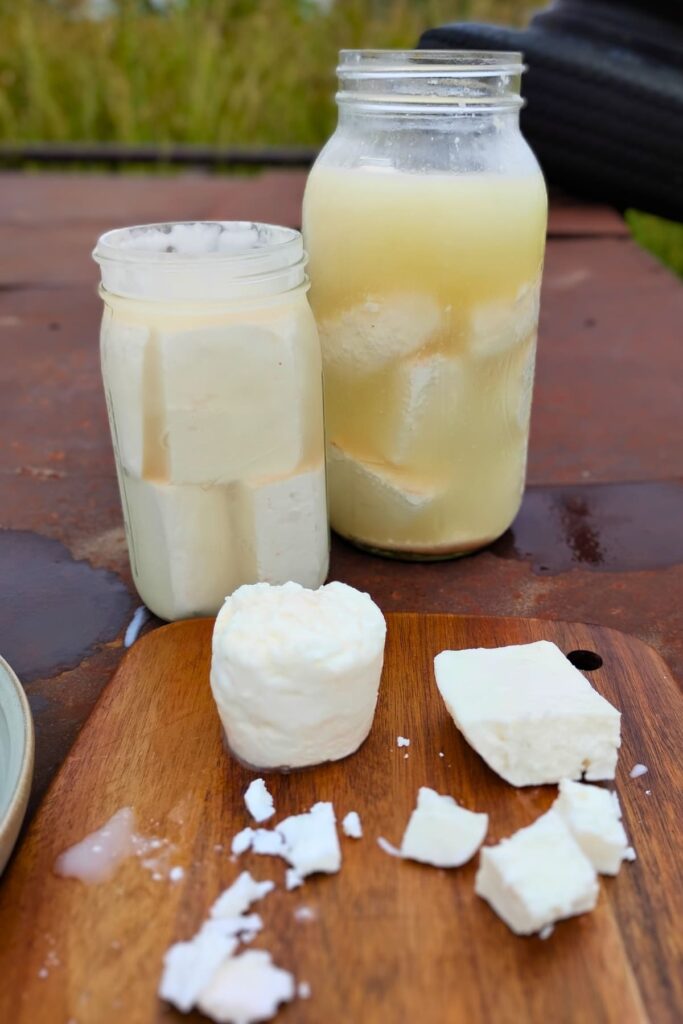
Try to age it for about a month before eating it, it gets better as it ages.
If you want to age the cheese at warmer temperatures, as it is done in Bulgaria, use a saltier brine. A 26% brine is used in bulgarian recipes. You can cut the saltiness at the time of use by soaking it in cold milk or water for a few hours or overnight.
What To Do With The Whey
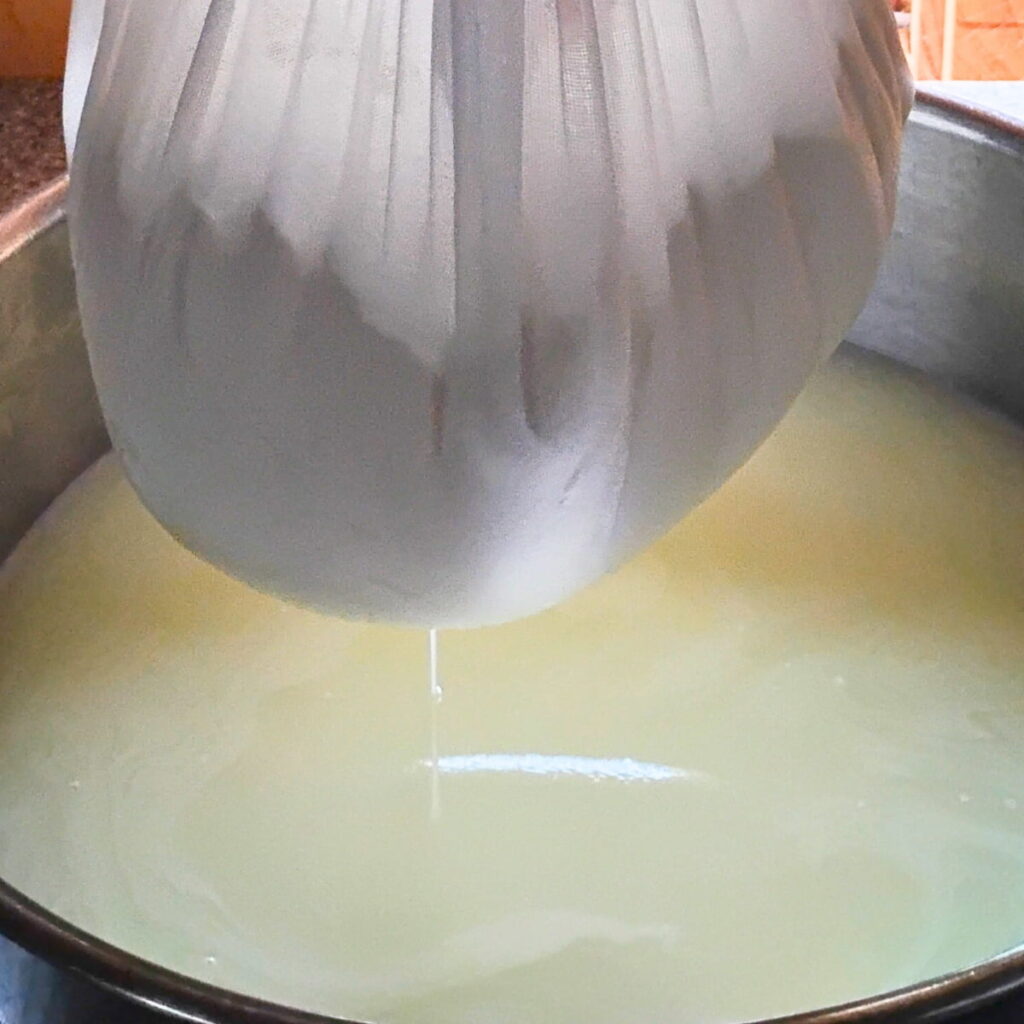
After you remove enough for your brine, use the leftover sweet whey to make ricotta cheese (not worth the effort for just a gallon batch, in my opinion), make lemonade, use it in your bread dough or any recipe that calls for buttermilk. Use it as fertilizer in your garden, feed it to the dogs, pigs, or chickens, and it’s good for the goats too if they won’t turn their noses up at it. I heard somewhere that it can increase milk production. My goats won’t let me find out. They won’t touch it.
I save the leftover salted whey in a separate jar and this can be used to season a soup, marinate meat, or to make bread.
I have a whole long post dedicated to whey and what to do with whey if you want more ideas. There are dozens of them!
And don’t forget to save a cup or two of the unsalted whey for your next batch of sirene or feta cheese.
Your Questions Answered
Final Thoughts

That’s all there is to it. This is so easy and, after excercising your patience a little, you’ll have some delicious homemade brine-aged cheese to use as a substitute for feta cheese in recipes. Sprinkle it over salads, on pizza, over casseroles, blend into a dip, or make savory cheese pastries. Sirene is a very popular cheese in Bulgaria and other countries. And I think there is a great chance that it will become popular in your household too. Give this simple and delicious cheese a try!
Let us know about your cheese making adventure and leave a comment and tell us all about it. And please don’t hesitate to ask if you have questions! I would totally appreciate a ⭐⭐⭐⭐⭐ rating if you like my feta recipe or this article!
Join the Food For Life Garden Community for more great recipes and homestead tips and ideas. I’m always adding new content. Don’t miss any new posts and learn more about my off-grid farm life.
Other recipes you might like
Make German Quark cheese – Make authentic German Quark, also called Topfen. A versatile fresh, soft cheese that is a staple in German cooking.
Awesome Uses For Whey – Save the whey! And use it in dozens of ways. You’ll find something to do with whey for every single drop. It’s nutritious, versatile, healthy, and makes great fizzy sodas!
Natural cheese making Process – Make your own mesophilic and thermophilic cheese starter and use it to make cheese the natural way. Make yogurt from scratch with your own homemade starter too.
Make your own chevre cheese from scratch – How to make super versatile creamy, spreadable cheese that is incredibly versatile. Replace store bought cream cheese with this healthy version!
Bonnyclabber – What is clabber milk and its uses Learn to make bonnyclabber, the original cheese. Nature’s way of preserving milk. A tasty, creamy cheese that makes a really good frosting for einkorn zucchini bread.
Queso Fresco cheese recipe – The quickest, easiest cheese you’ll ever make and so versatile!
Creamy Quark Dessert With Oranges – Use quark in a German dessert, a creamy, luxurious mousse, healthy enough for every day desserts, but fancy enough for special occasions.
Awesome Strawberry Quark Cheese Mousse – A delicious German quark dessert with pureed strawberries.
Foraged Wild Weeds Pesto Recipe – Make a delicious Pesto with dead nettles and other wild weeds with this guide to foraging wild greens.
How to make your own sourdough starter – This forms the basis for any gut-healthy sourdough bread, that you can keep going for a hundred years or more.
Make an ancient grain sourdough bread – The easiest sourdough sandwich style bread you can imagine. No kneading required and it bakes up nicely airy and chewy and tastes amazing.
Shop This Post
Equipment
Royal Berkey water filter unit
A large 6 qt pot
12 quart stock pot for larger batches
Flour Sack Towels
Organic Flour Sack Towels
Butter Muslin
Unbleached Cheese cloth
Organic Cheesemaker’s Cheese Cloth
Cloth Diapers
Skimmer
Thermometer
Long Frosting Knife
Measuring Cups
Micro Measuring spoons
Colander
1 Quart Mason Jar
Half Gallon Jars
Micro Measuring Spoons
Glass Fermentation Weight
Ingredients
Redmond’s Real Salt
Himalayan Pink Salt
Celtic Sea Salt
Walcoren Organic Kid Rennet
Walcoren Kid Rennet Tablets
Walcoren Lamb Rennet
Animal Rennet
Vegetable Rennet
Live Kefir Grains
Yogurt Culture
Buttermilk Culture
Flora Danica
Feta Culture
Calcium Chloride
Lipase Powder
Recommended literature for Cheese making
The Art Of Natural Cheese Making, David Asher
Pin This Recipe
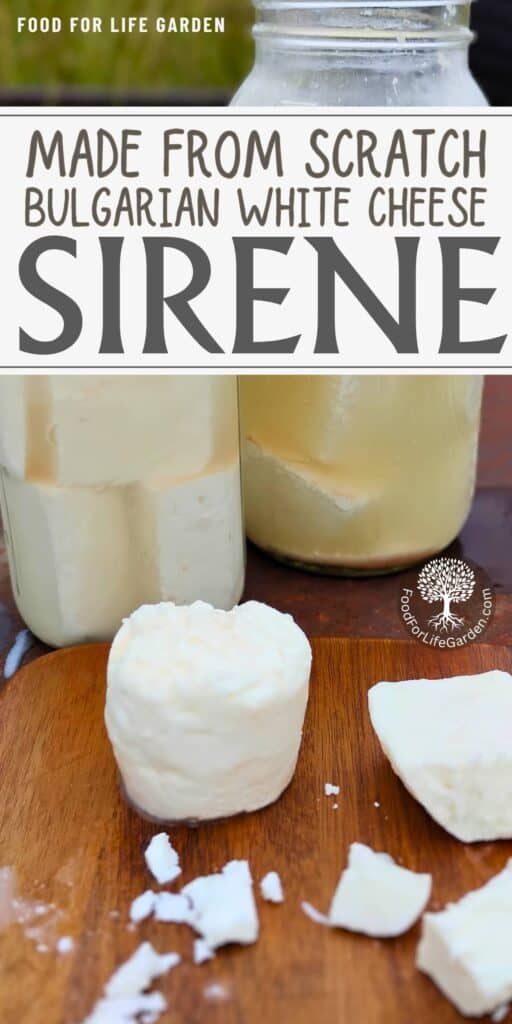
Save This Recipe For Later
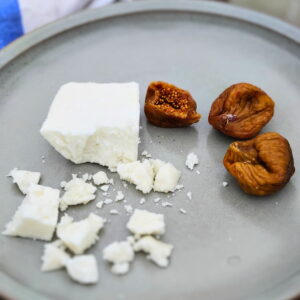
How To Make Brine-Aged Sirene Cheese
Equipment
- A large 6 qt pot
- thermometer
- A skimmer
- Long Knife
- Cheesecloth – Do not use the kind from the grocery aisle. It won't work. Use a flour sack towel, tea towel, piece of muslin, butter muslin, or cheesemaker's cheese cloth. Cloth diapers work really well too for one gallon batches.
- Measuring cups
- Measuring spoons
- colander
- Board or plate – To place on your cheese for pressing.
- Weight – This can be a heavy bowl, clean rock or water jug.
- Large bowl – For catching the whey
- 2 quart mason jars – one for brine and one for aging the cheese
Ingredients
- 1 gal Milk – I highly recommend using raw milk, but pasteurized is fine. Avoid ultra-pasteurized (UHT) milk.
- ⅛ cup Mesophilic starter culture – Homemade clabber starter culture,, backsloppped whey from your last cultured cheese making, kefir, buttermilk, or the appropriate starter culture powder (use half as directed on the package label). Please check the notes for more details!
- ⅛ cup Thermophilic starter culture – such as yogurt with live cultures, or the appropriate starter culture powder (use half as directed on the package label). Please check the notes for more details!
- ⅙ tsp Rennet kid or animal rennet – Do not use junket rennet. If you have rennet tablets, use ⅛ of the tablet.
- ¼ cup Filtered water to dissolve the rennet – Avoid chlorinated water such as tap water.
- ¼ cup Sea salt – for the brine and some more to sprinkle on the cheese. Important: use a salt without additives! It should only say salt on the label, so avoid table salt.
Optional
- Lipase Powder – Add lipase to intensify the sharp flavor of the cheese if you like. Add 1/16 – 1/8 tsp per gallon of milk. Dissolve in 1/4 cup of filtered water half an hour before adding to the milk at the same time as the culture.
- Calcium Chloride – Calcium chloride helps your curds set more firmly helps with drainage and can increase your yield. Especially helpful when you work with pasteurized milk which has a weak calcium content. Use 1/4 tsp per gallon of milk and dilute it in 1/4 cup of filtered water before adding. Add 1/16 tsp to the brine too.
Instructions
Before you start
- There are some more details in the notes about brining and prepping, so check there if anything here stumps you. You'll also find details about different starter cultures you can use. If you're just starting with cheese making, and you don't have raw milk, I'd recommend using yogurt and buttermilk with live cultures from the grocery store to get you started on making this cheese.
- If you're going to use lipase powder, stir it into some water to hydrate before you start so it can soak over the next half hour.
Warm the milk
- Slowly warm the milk to 95 degrees. This will activate the thermophilic bacteria if you start with raw milk.
Add culture And Acidify
- Pour your culture into the milk and stir well. If you use freeze-dried culture, sprinkle it over the top and let it hydrate for 2-3 minutes before stirring it in. If you’re adding clumpy yogurt, you can stir it into a little milk to break it up before adding to the pot.
- If you decide to use calcium chloride and/or lipase powder, add them at this time. They both need to be diluted.
- Let the milk acidify for an hour if you have time. I prefer doing this, but it is not necessary.
- Wrap the pot into a thick towel while the milk acidifies to keep it evenly warm.
Add rennet
- Dilute the rennet in ¼ cup of filtered water, pour over the milk and stir well with the skimmer but not too vigorously to mix everything. I count 20 up and down motions when I stir. You don’t want to stir too long, since the rennet will start setting up the cheese almost immediately and if it gets disturbed, it can’t do it again.
- Use your utensil to stop the motion of the milk as best as possible. Place the lid on the pot and let it stand for the next 1-2 hours where it won't be disturbed.
- I like to wrap a towel around it to keep the temperature inside the pot warm for as long as possible, to keep the temperature more even throughout the milk, and to keep any fruit flies away that seem to find their way into an uncovered pot somehow.
- As the milk ferments and the rennet enzymes go to work, it will become more acidic, form a yoghurt-like curd and sink below the whey surface.
Check And Drain The Curd
- After an hour, check on the curd. Has it solidified? Do you see a soft cake in a pool of whey? If you tilt your pot slightly, can you see a clear edge of curd? If so, it is ready to drain. If not, leave it alone and check on it every 15 minutes till it looks good.
- Keep checking, you don't want to over-ferment it, but you also don't want to cut into it too early, or you'll lose a lot of the solids to the whey and you'll end up with a hard cheese. It should be about the consistency of regular yogurt.
Cut the curd
- Now you need to cut the curd to help release the whey. Take a long knife and cut a grid into the curd by making a long cut all the way to the bottom of the pot and accross, then cut 1-2" away from this one and so on. Make the same cuts now perpendicular to the first cuts. We want fairly large cubes.
- Leave the curds to heal for 15-30 minutes.
Drain the Curd
- Line a large bowl or pot with a damp cheese cloth (use filtered water to wet the cloth).
- Take your skimmer, a shallow bowl, or a ladle. I misplaced my skimmer and my ladle was in a pot of soup, so I used a measuring cup, which worked quite well.
- Start scooping the curds into the cheese cloth. This acts as horizontal curd cutting.
- Once you have all the curds transferred, its time to drain them.
Draining The Curds
- Take 3 corners of the cheese cloth into one hand and take the fourth to go around the outside of all of them. Tie a knot and double knot with another corner.
- Put it on a hook and carefully lift it by the hook to make sure it holds.
- Then and hang from the ceiling, a cabinet knob, or a long wooden cooking spoon or dowel that's resting on the edges of a large pot. The whey should run out as a small and steady stream. Let it pre-drain for an hour and a half.
Pressing the Cheese
- Squeeze your curd a little and take a string to tie it up.
- Tie it into a tight ball just above the curds.
- I like to pour off all the whey into the fermentation pot before I do this, and at the same I save a quart of the whey to make the brine later and a cup or two for my next batch of cheese.
- Now put a board or a plate onto the cheese and place a weight on top. I just used a bowl full of water with a lid so it doesn't make a mess if it tips over. You can use a clean rock too, or a jug of water.
- Press the cheese for 6-10 hours or overnight and up to 24 hours.
Prepare Your Brine
- Make your brine when you salt your cheese. Your brine will be made with the same whey that was draining from your cheese. Add ¼ cup of salt to a quart jar to make a 7% salt brine.
- Pour enough whey to fill the jar. Stir well to dissolve. Seal it with a lid and let it sit beside your cheese to ferment at the same rate.
- The temperature of both needs to be the same for them to acidify at the same rate. If you have pH strips, you can measure your pH before brining. It should be about 5.0 or a little less.
Salting The Cheese for Immediate use
- Unwrap the cheese and taste it if you like. Now it needs to get salted. If you want to eat it fresh and not age it, cover all surfaces with salt and put it in a deep plate, on a tilted board or a rack to drain some more. After a few hours you can eat it. Wrap the rest up and it should keep in the fridge for a week or two.
Salting The Cheese For Aging
- You'll want to age the cheese in brine to make it feta-like, so you need to follow a few more steps.
- Cut the cheese into chunks that will fit into your aging container. I like to use a wide mouth mason jar. Its opening is not that big, so keep that in mind.
- Salt all the edges of every chunk lightly and set it on a draining mat on top of your colander, a cooling rack or other rack. It needs to drain freely. I find that it dries best when it has much airflow around it and prefer to place it on a rack.
Drying The Cheese
- Over the next 3 days, flip every day one or two times and lightly salt the wet surface some more. Once the cheese is dry to the touch, it can go into the brine. If it's not dry yet, keep it out until it is. I use a screen tent to keep the flies out.
Brining The Cheese
- Place your dried chunks of cheese into the aging jar and pour the prepared brine down the sides into the jar to fill it up to the top. I like to place a weight on top if there is room, to keep the chunks below the surface of the brine. This will prevent mold to grow on it.
- Now seal the jar well and age it for 2 weeks at cheese cave temperature (50-55 degrees), in a cellar or in a cool spot in your house. After that you can put it into the refrigerator to age longer. It should keep for at least 6 months this way.

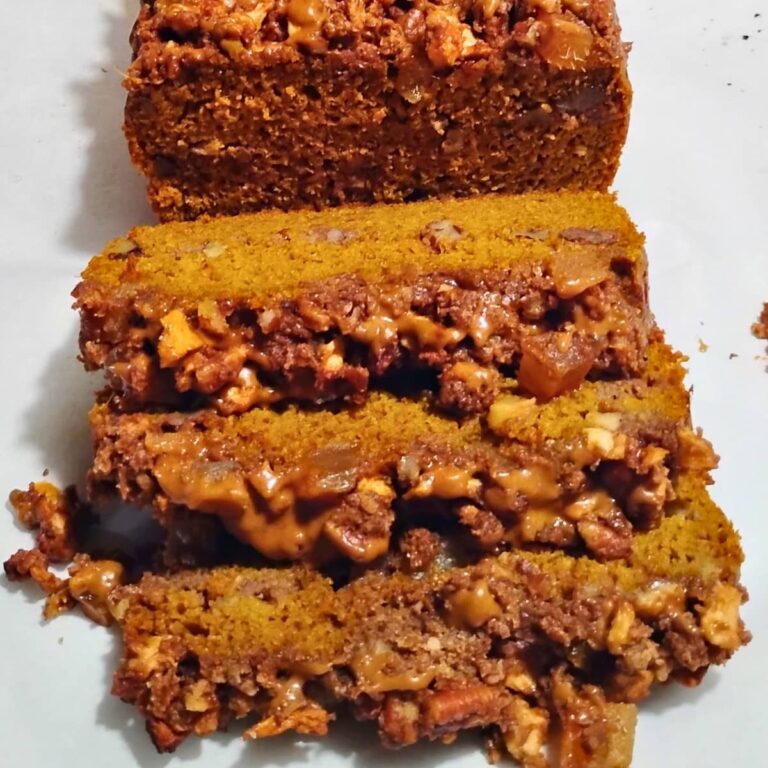
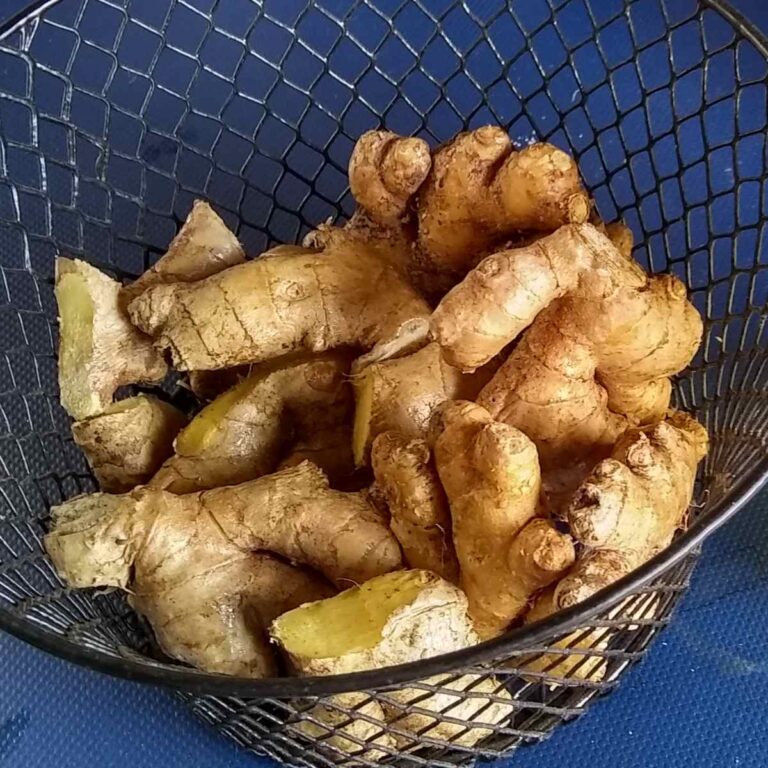
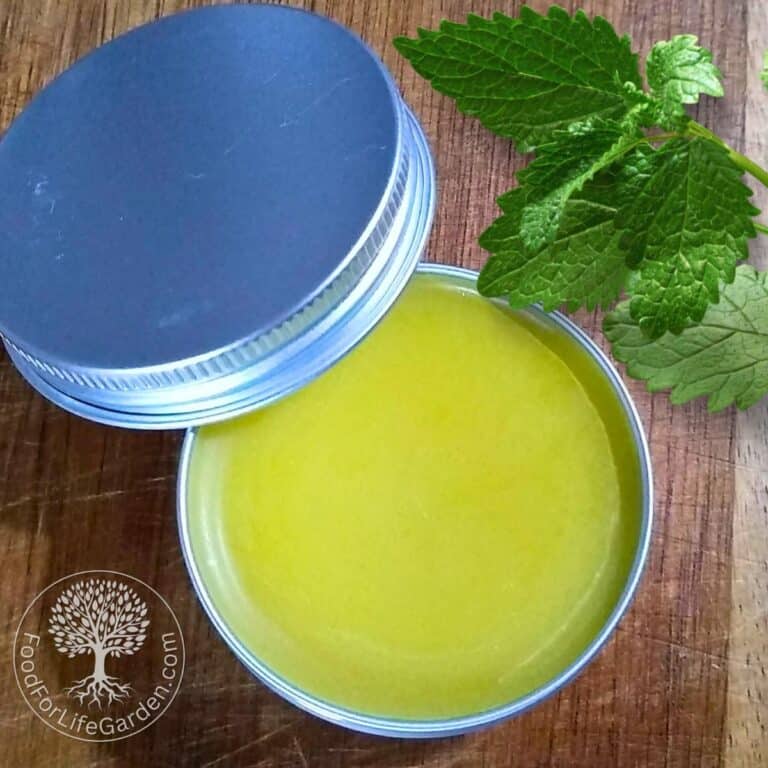


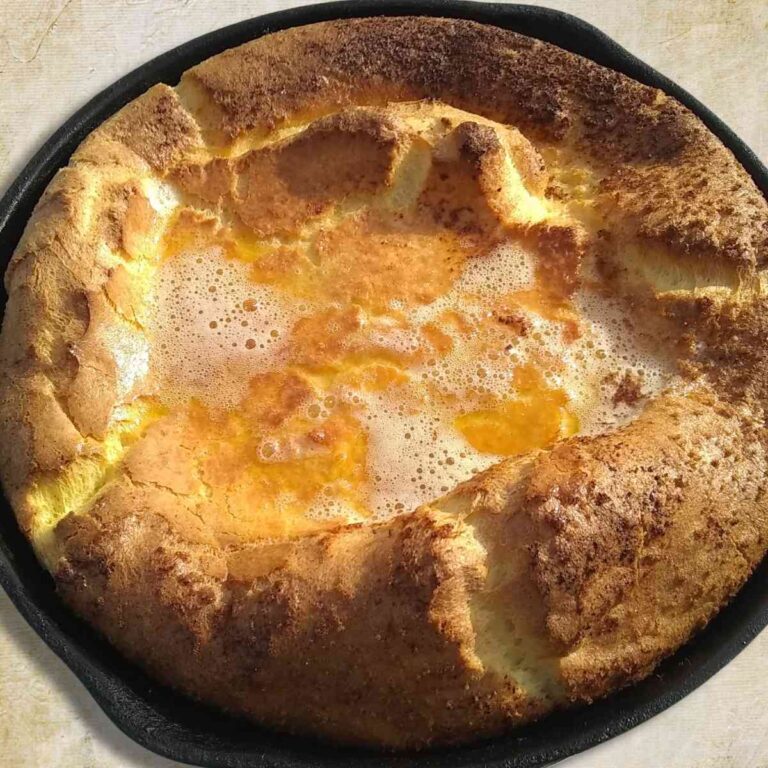
Brine-aged Sirene cheese is an easy cheese to make and is so very tasty! This is a traditional white brined cheese that is in the same group of cheeses as Greek feta but it can be made with any dairy milk. I encourage you to try this yourself! And please ask if you have questions, I will answer as soon as I can! ❤️
What an informative post! And I LOVE feta, so I’m sure this would be delicious. Thank you!
You’re welcome! I’m so glad you found this informative. Thanks so much for your comment!
I’m getting ready to go out and milk and now I know exactly what I’m making this morning. Thank you for this recipe. I’ve never heard of Bulgarian Feta before, but I’m excited to give it a try!
That’s awesome, Hayley! I hope it works out great for you and that you’ll love it as much as I do!
I have never heard of this type of cheese before – what a detailed post – I love feta so would love to try this.
Hey Jennifer, I hope you get to try this and come back to tell us about it! 😊
I love cheese and this sounds amazing! Who knew there was so much that goes into different cheeses?!? Heidi offers a ton of great info in this post! Thank you for sharing!!!
You’re so welcome, Kelly, and I’m glad you liked this article!
Very interesting! I had never heard of sirene cheese before.
I really want to try making cheese eventually! I need to find time to dive into that.
Hi Ophelie! Cheesemaking is such fun and an adventure. So much happens during that long process, and you’re right, it takes some time, but it’s worth it. You could start with something quick like queso fresco, which is a fun first cheese, or quark which takes a couple of days for the culturing and draining, but it’s very little hands on time.
I love all of your unique recipes, what a fun way to learn to make cheese!
Thank you for saying so. And making cheese is a lot of fun. It’s a process, but it’s worth it!
This is awesome! I’ve been wanting to try making some kind off cheese at home, and your steps make it feel totally doable. Can’t wait to give it a shot!
How awesome! I’m glad you want to try cheese making. This is a fun cheese to try. Good luck and let us know how it went!
Wow, I don’t think I’ve ever heard of sirene cheese before, but I’m definitely intrigued. I’m sure I would like it because I love feta!!
I think you would love this. It’s very much like feta, it just does not have the rigid constrains of using the regional greek sheep and goat milk, and the process can vary too.
We love feta cheese! What a fun recipe to try out!
Hey Penny, I hope you get to try it. It’s a great cheese to make at home!
YUM! This sounds like such a fun recipe to try out. I’ve never made cheese at home but have always wanted to give it a try.
Hey Molly! It is fun to make! I would be excited if you try this and would love to hear how it went!
I have never tried making cheese myself and this has truly made it seem so simple. The flavor profile is exactly what we love, thanks for the detailed explanation, history and instructions!
You’re so welcome, Hailey, and thanks so much for your comment!
You know how to make so much from scratch. You do a great job really breaking things down step by step when you share your knowledge with us. Love this page for step by step recipes and tips! Thanks Heidi! 🙂
You’re very welcome, Alisha! And thank you for the kind words. I’m glad that you like this!
I love your step-by-step instructions and accompanying photos for making Bulgarian Sirene aged cheese. I’m a BIG feta lover so I really want to try this!
Hey Jenni! Thanks so much for your comment and I hope you get to try it and I’d love to hear about it!